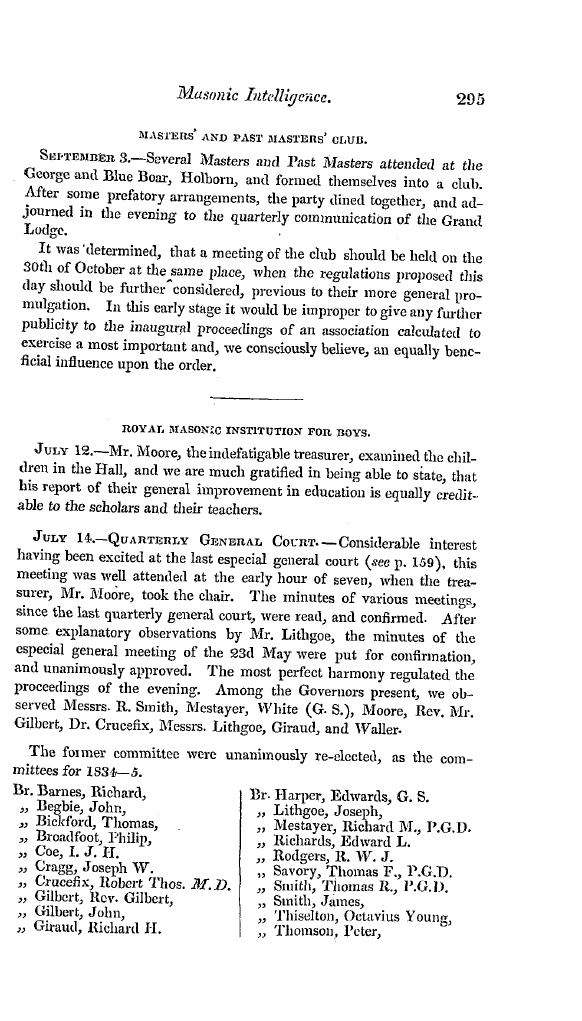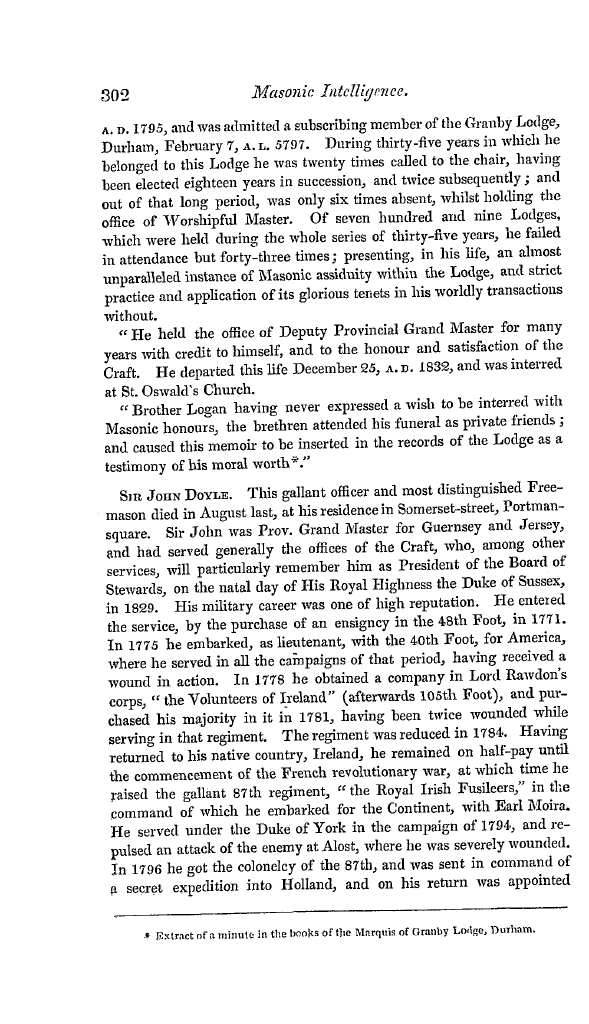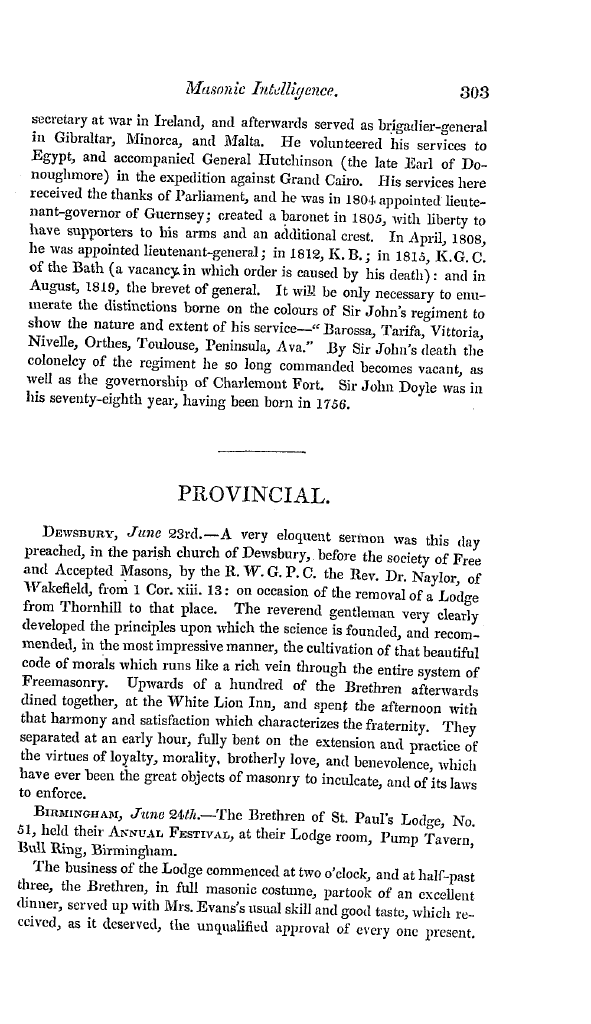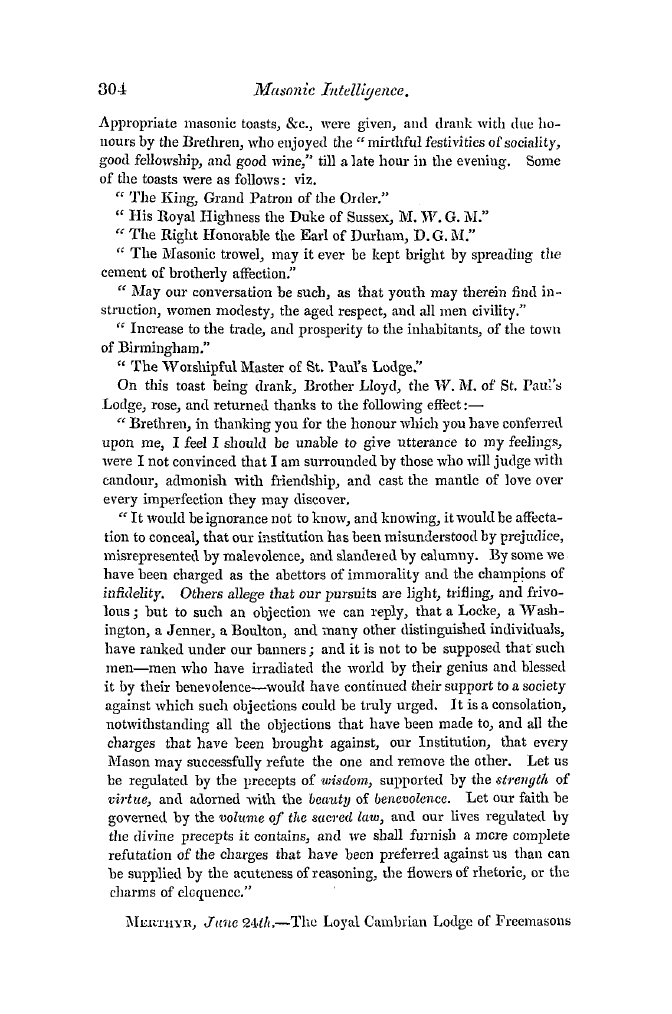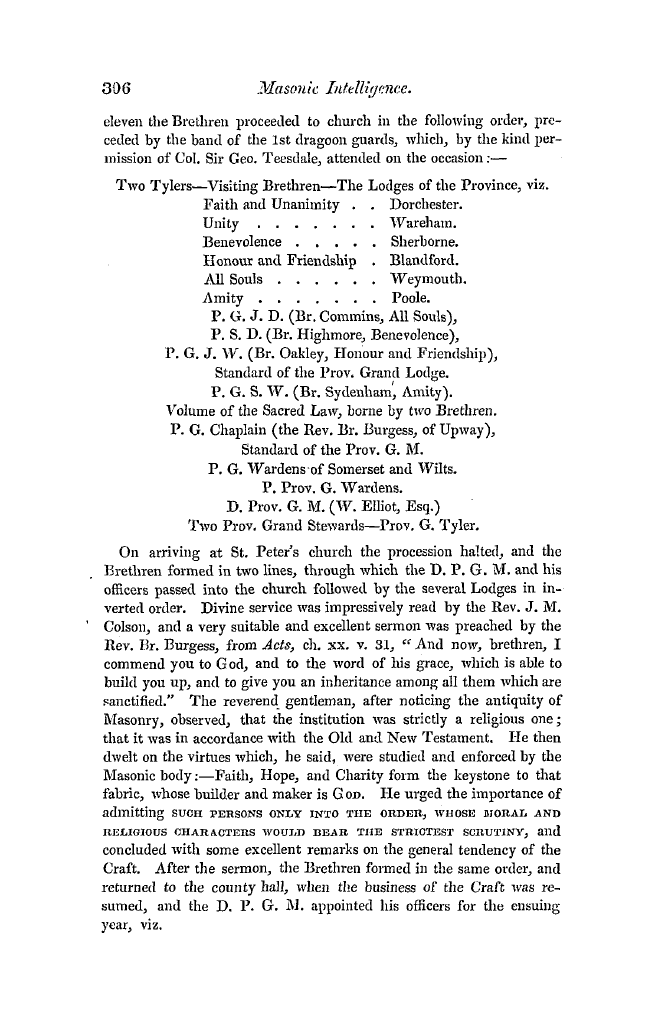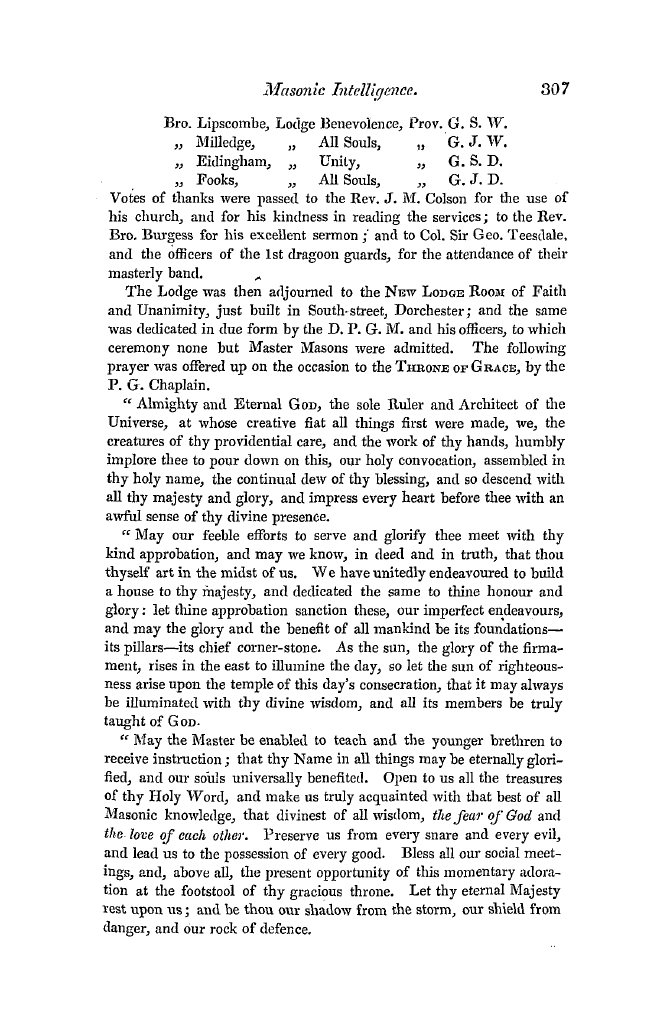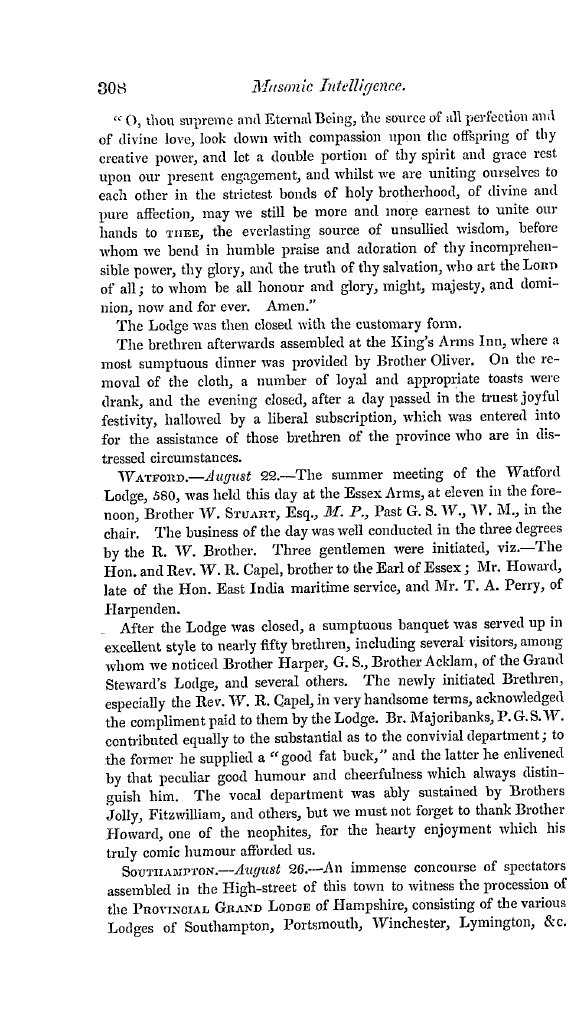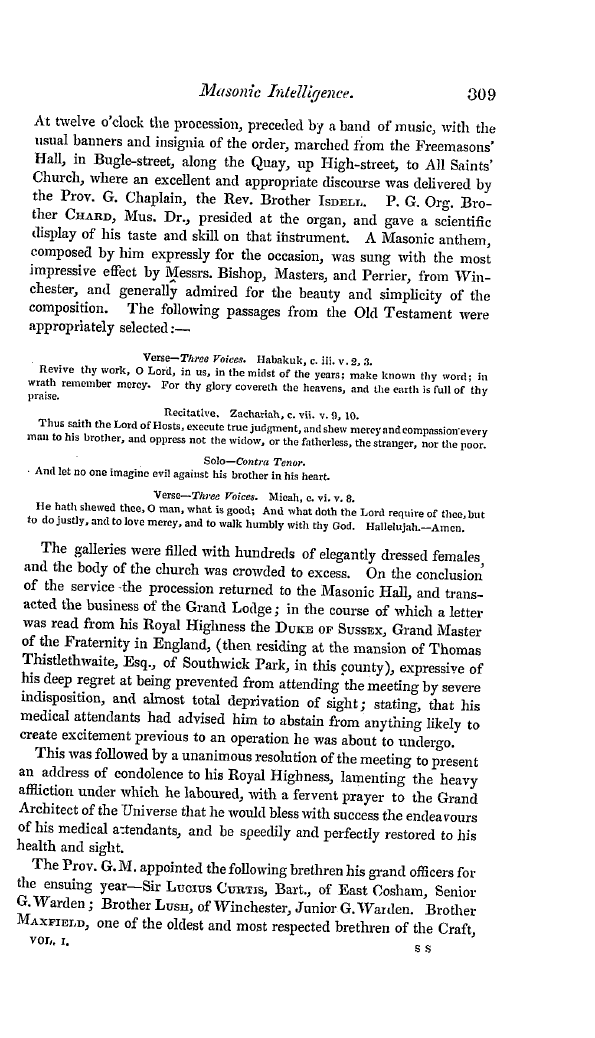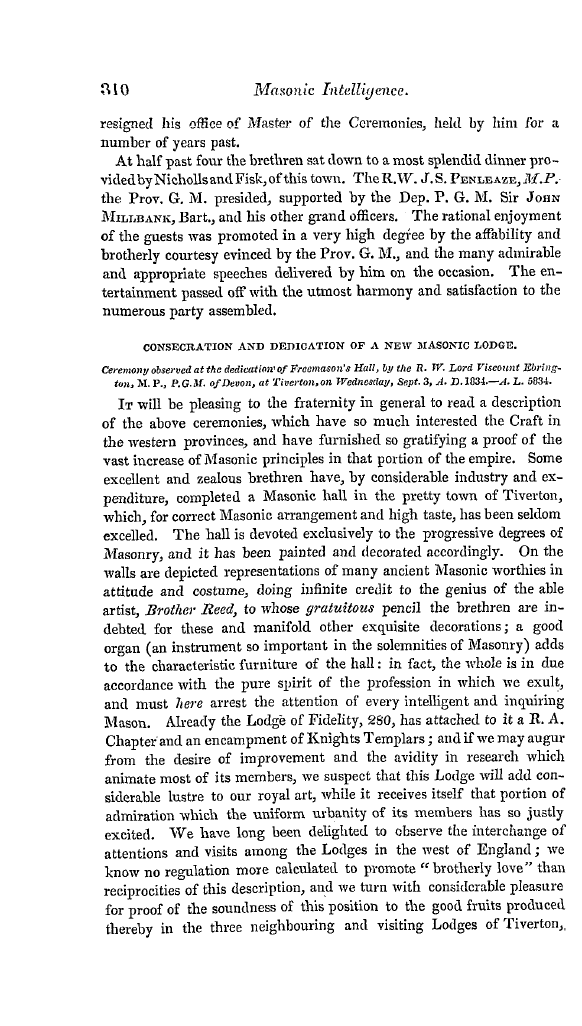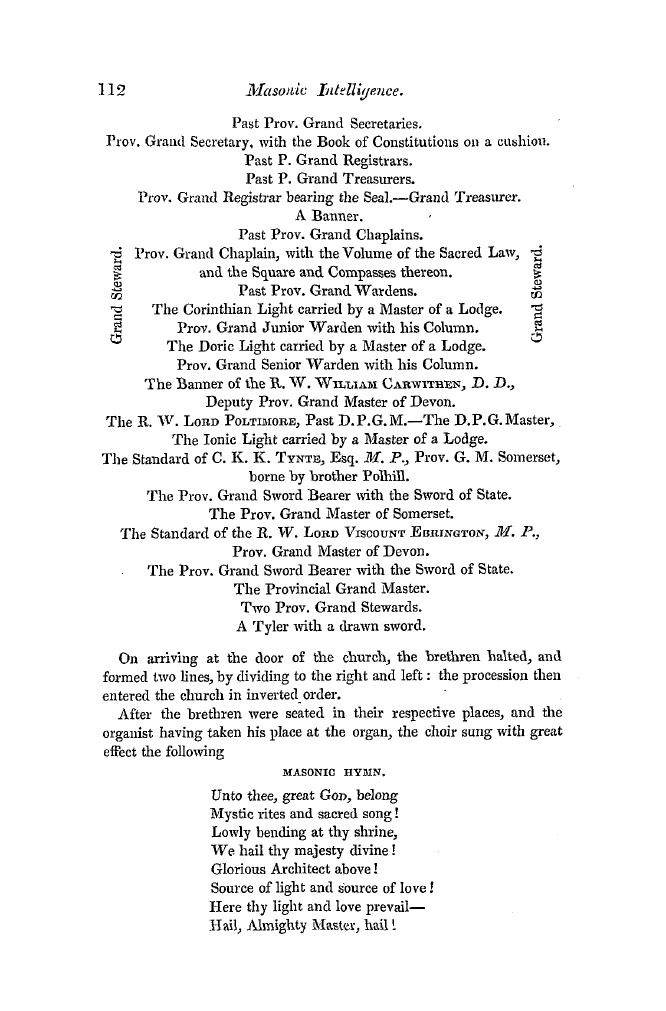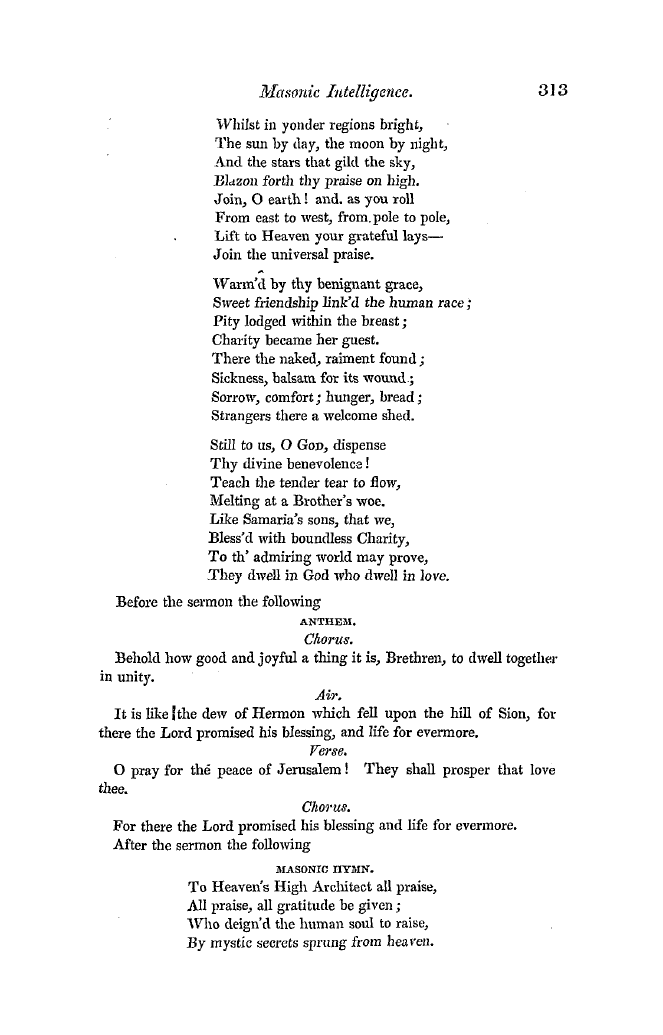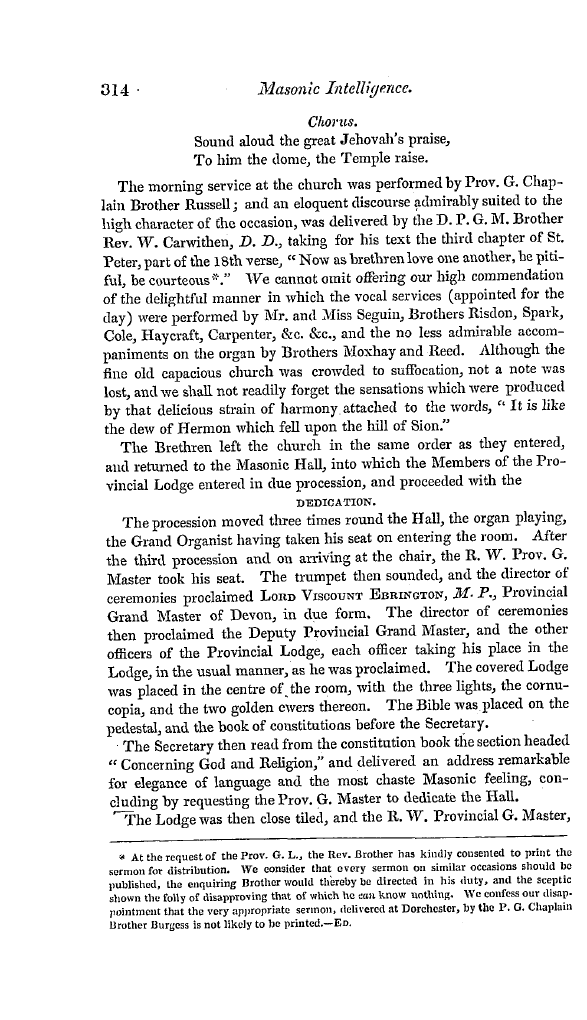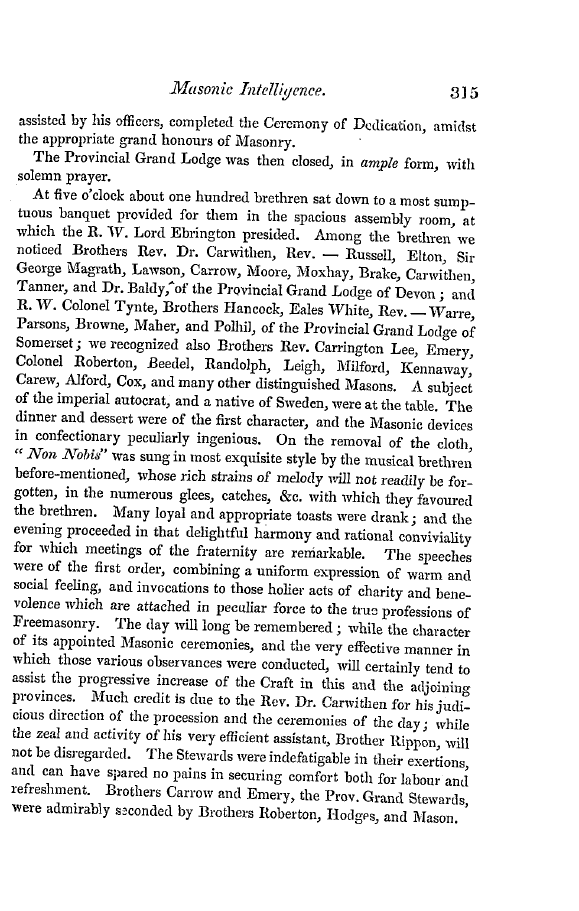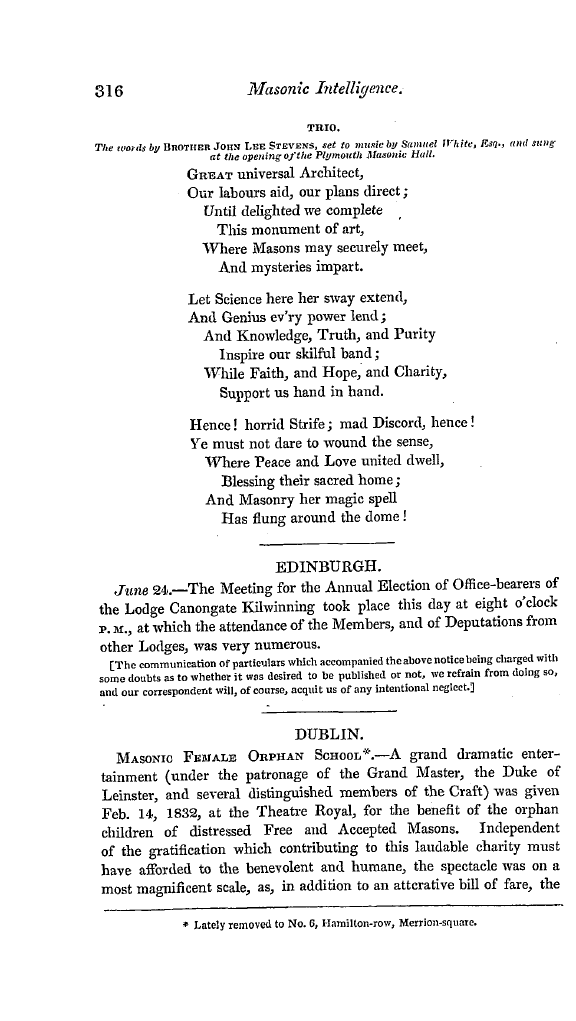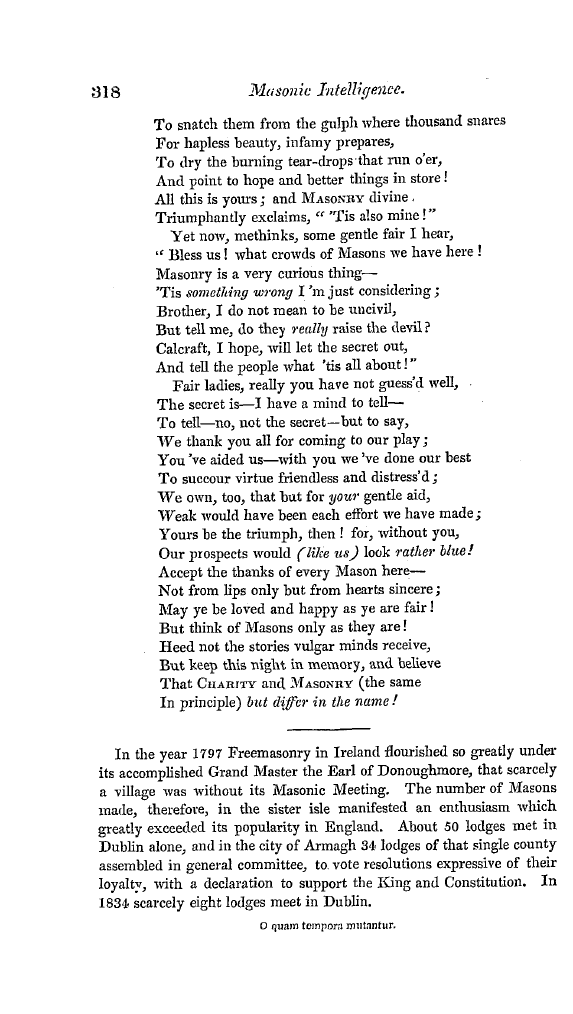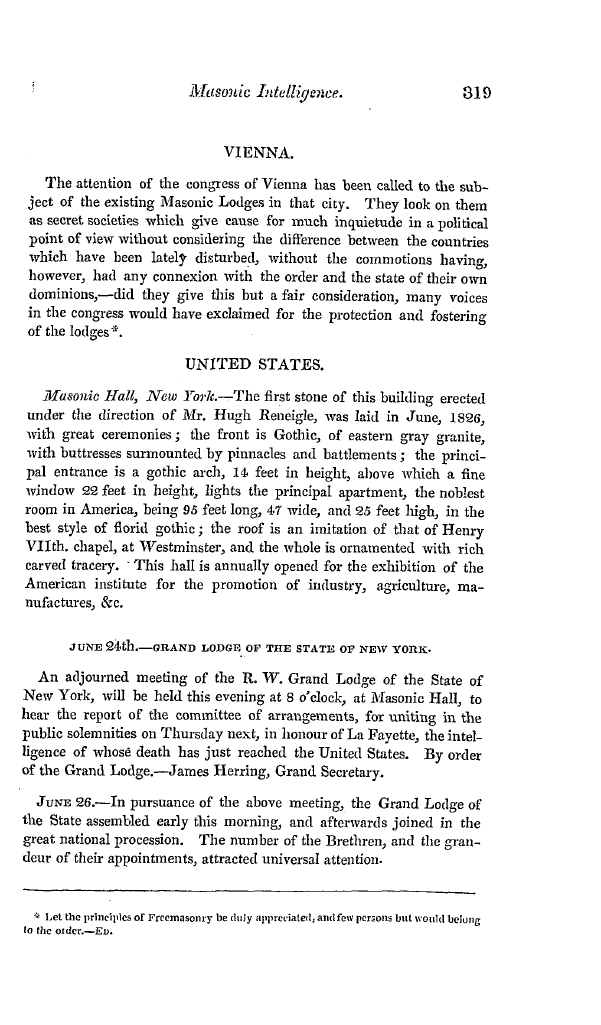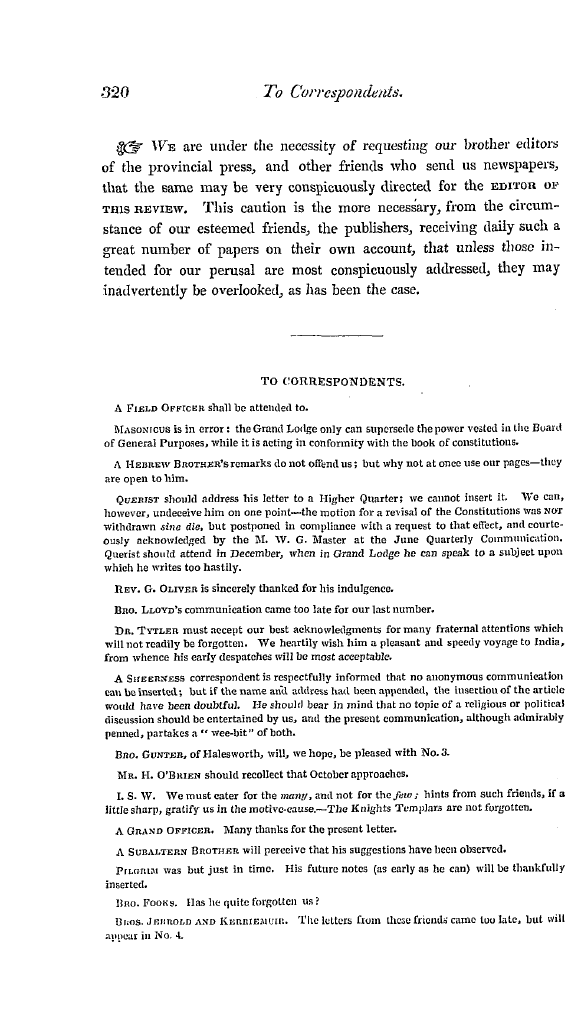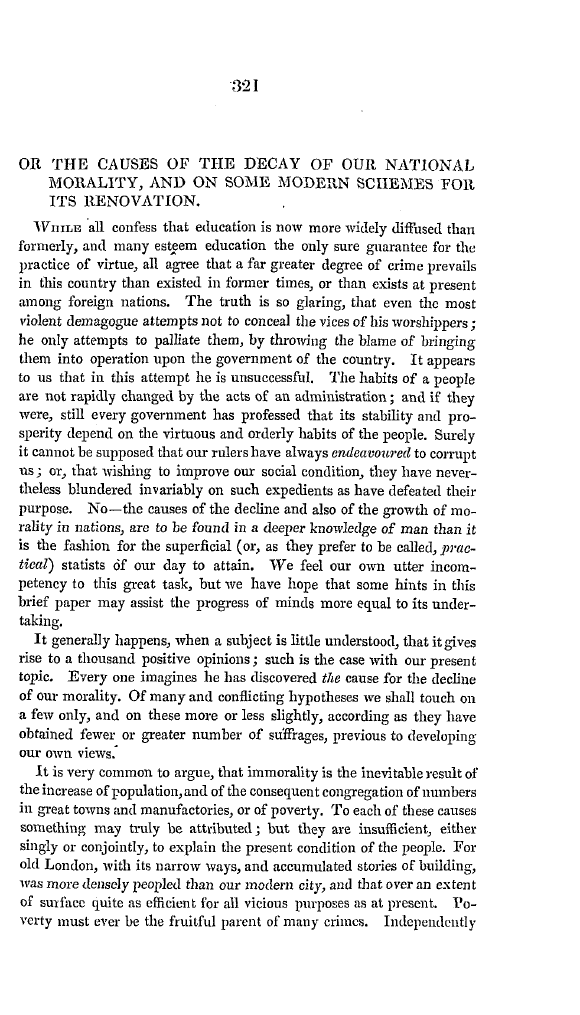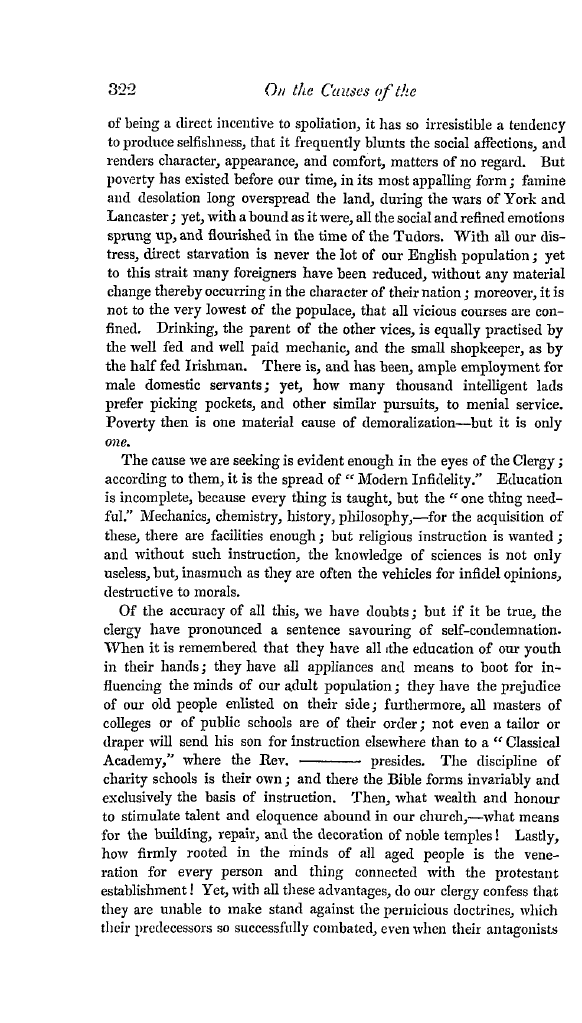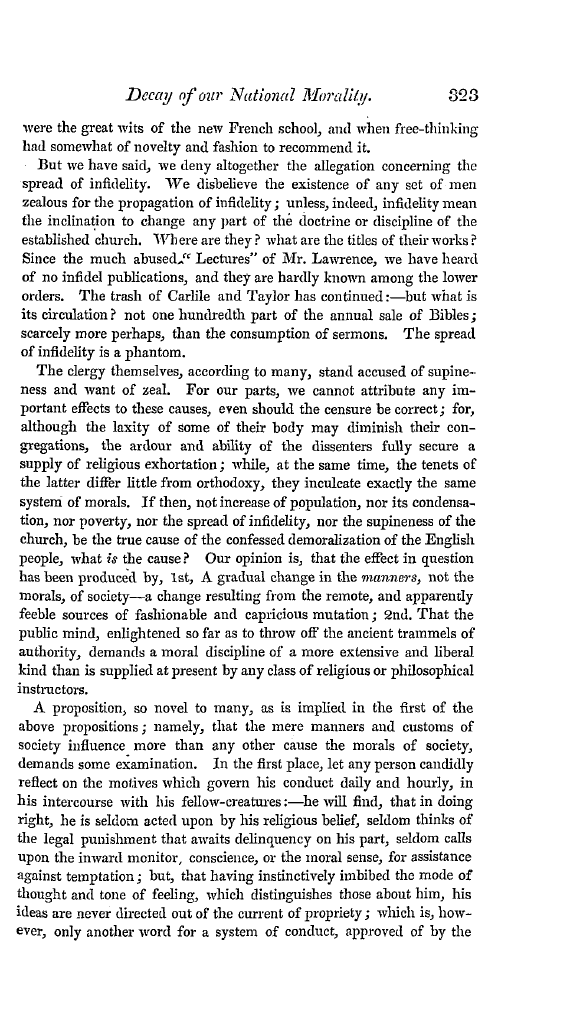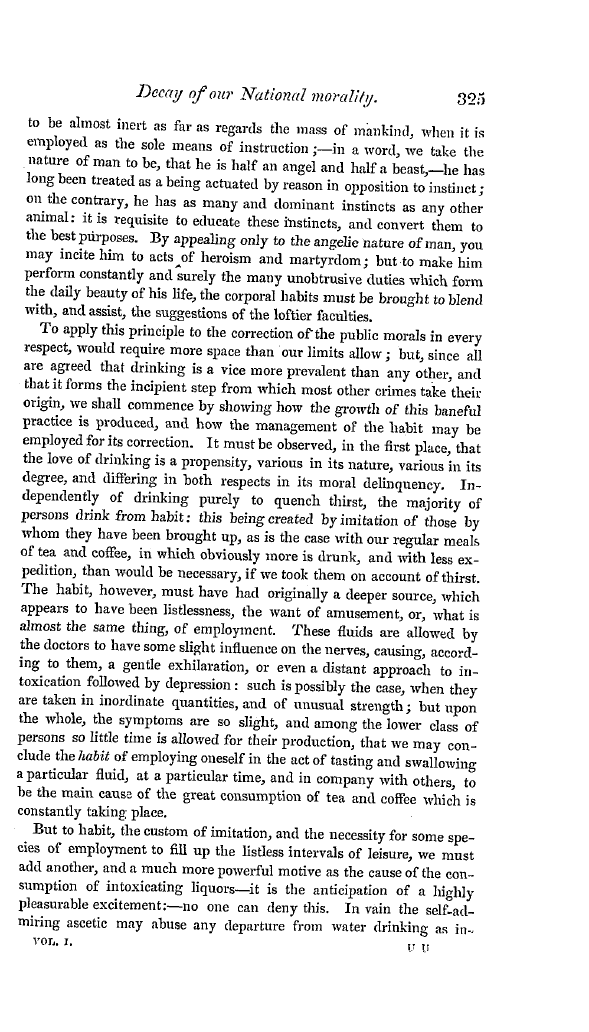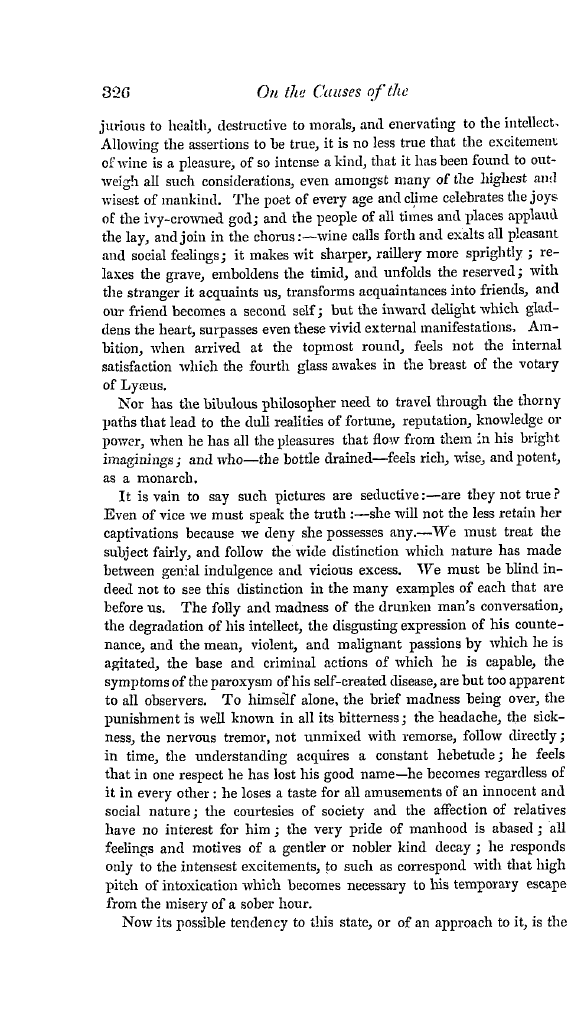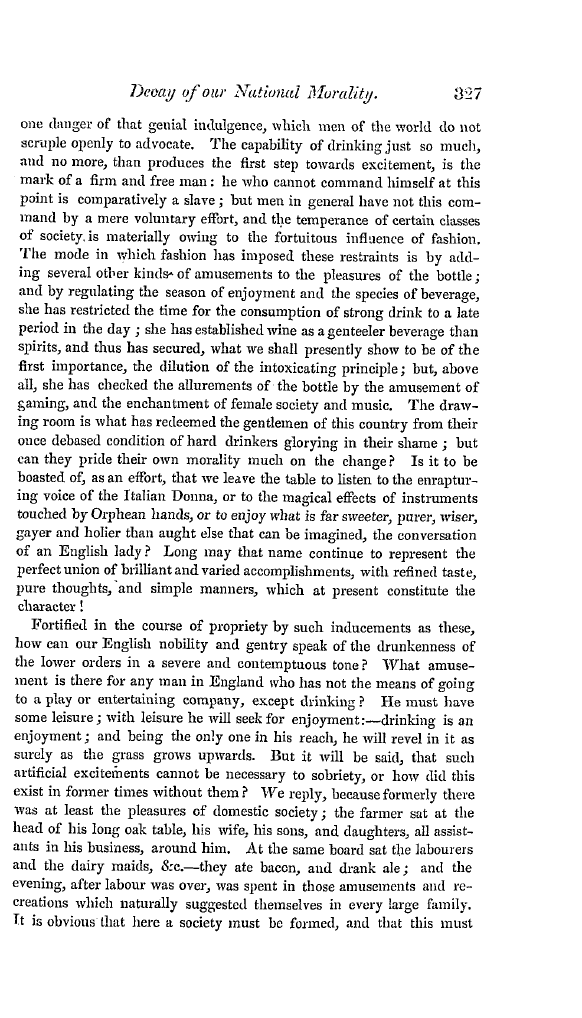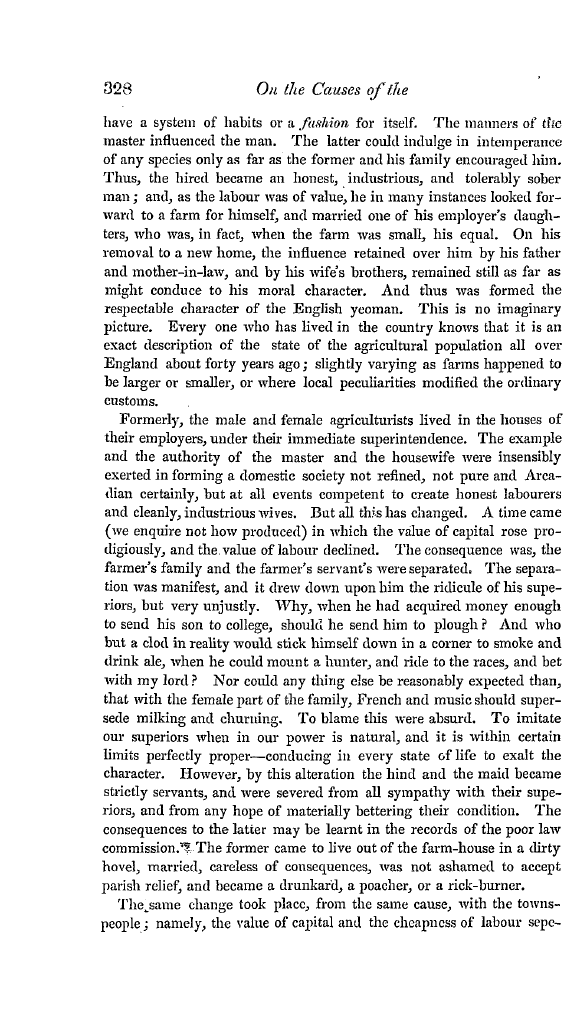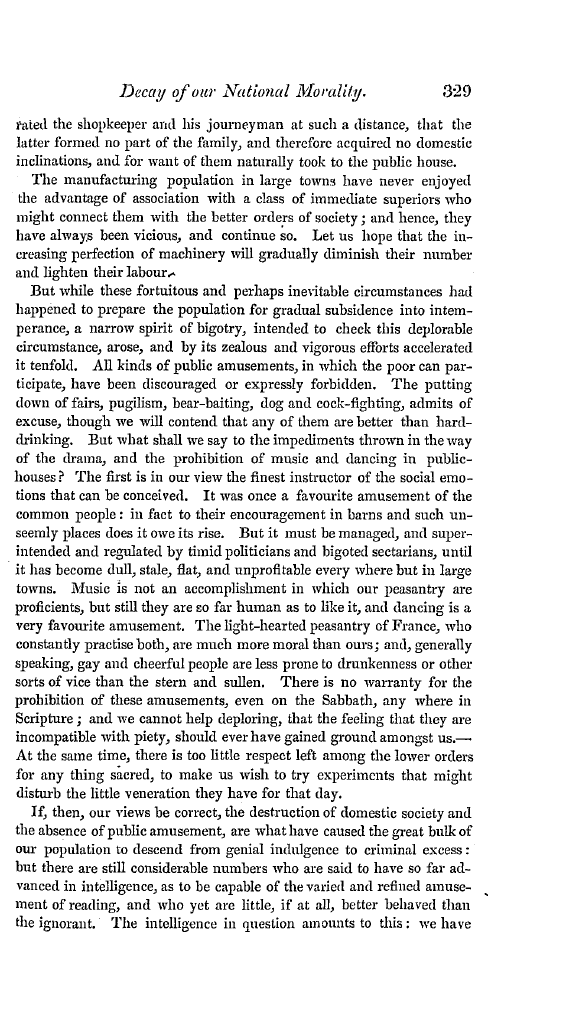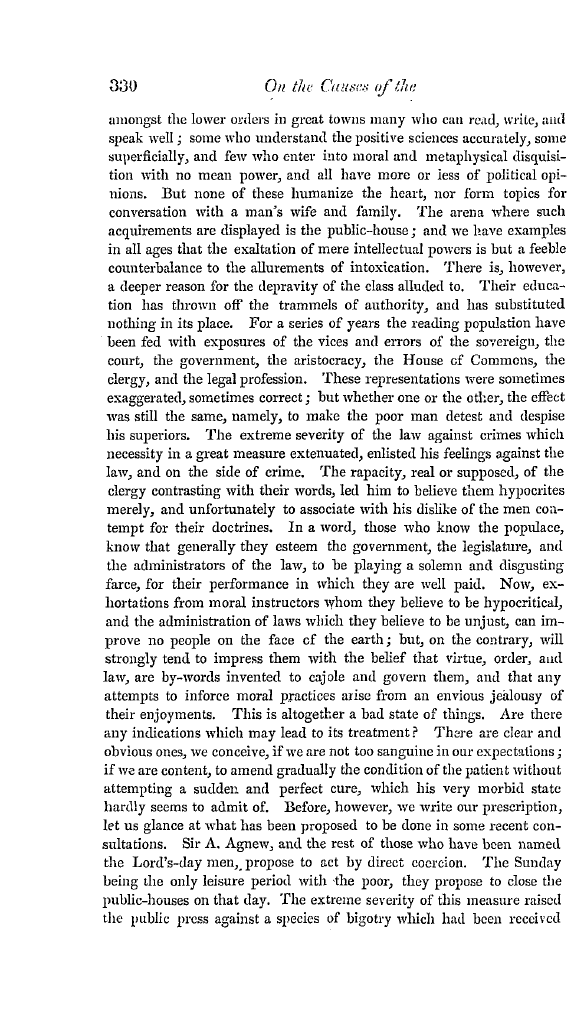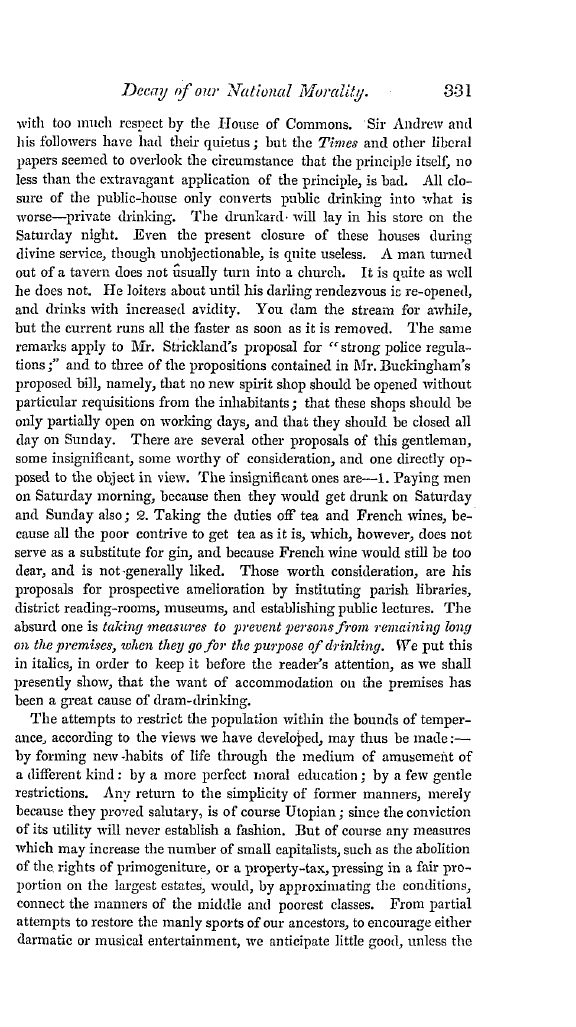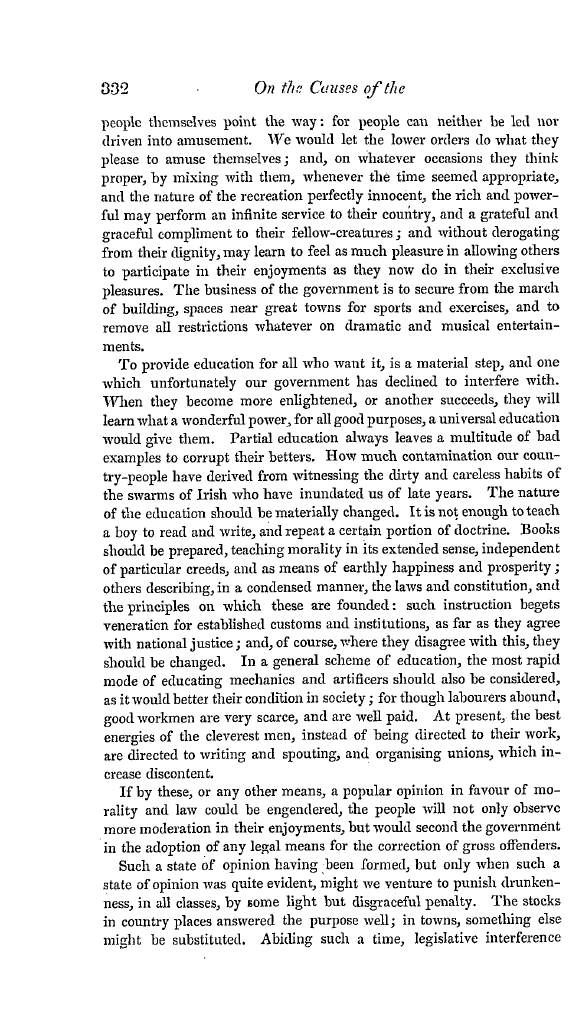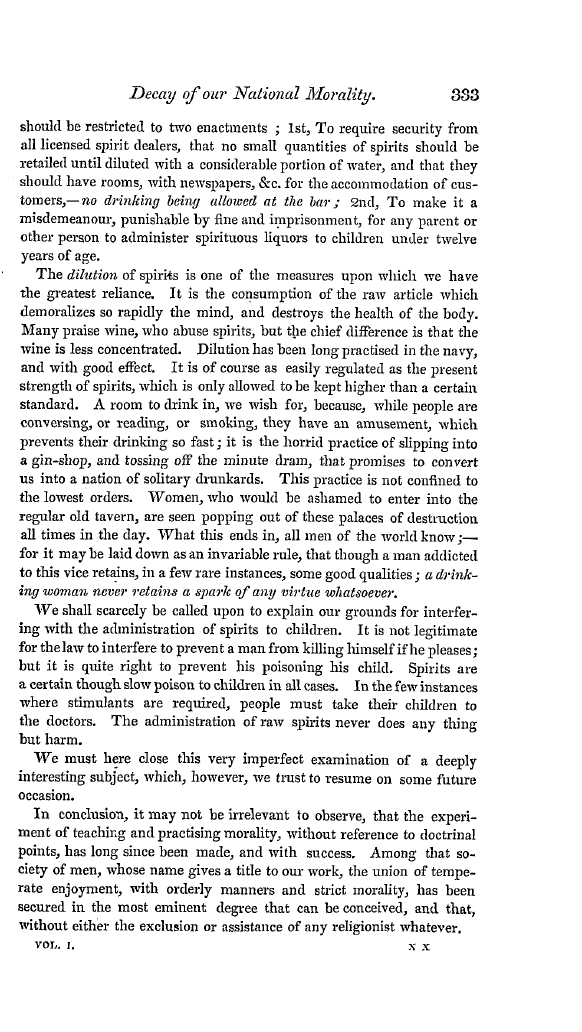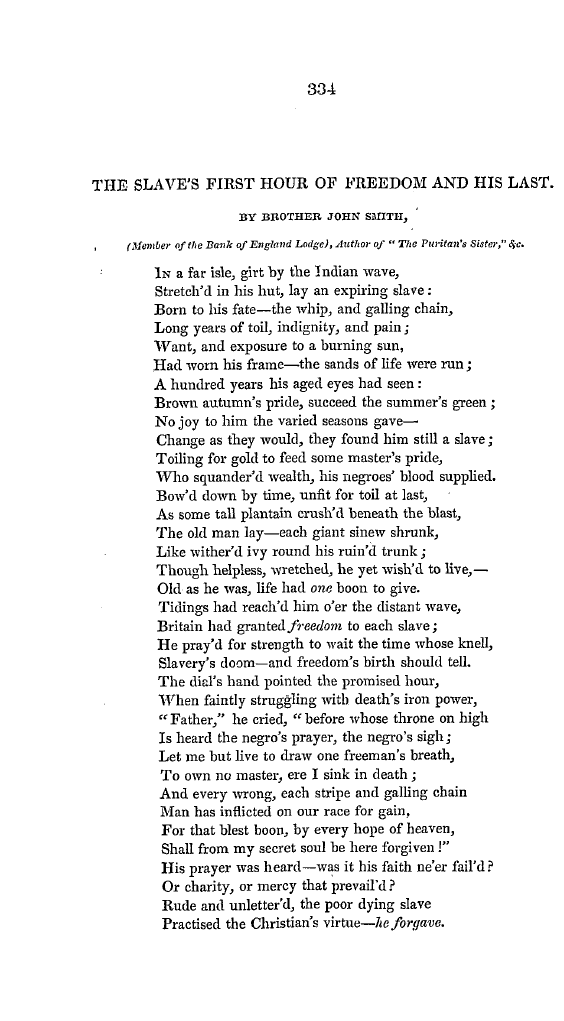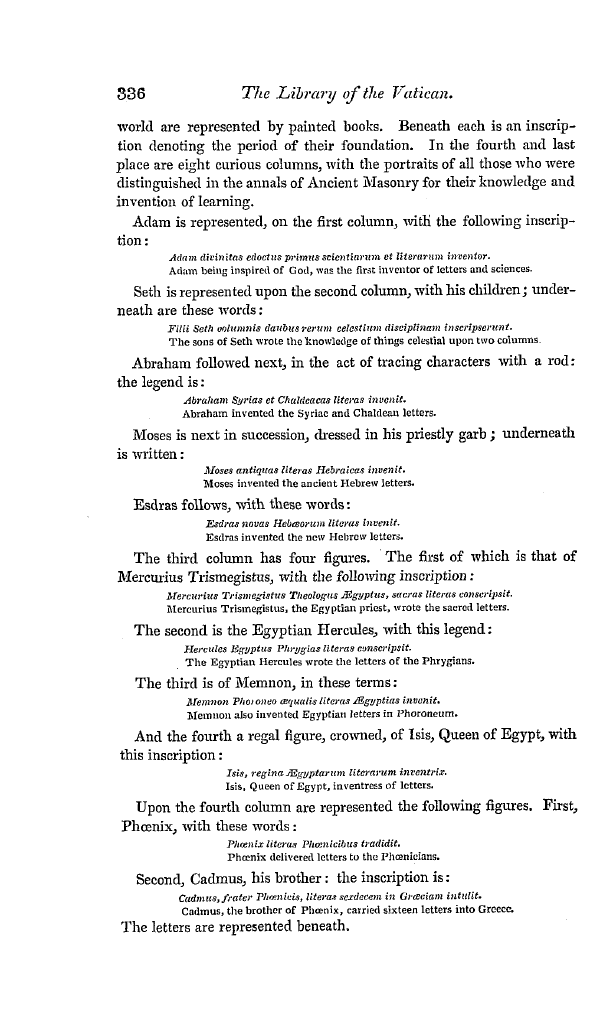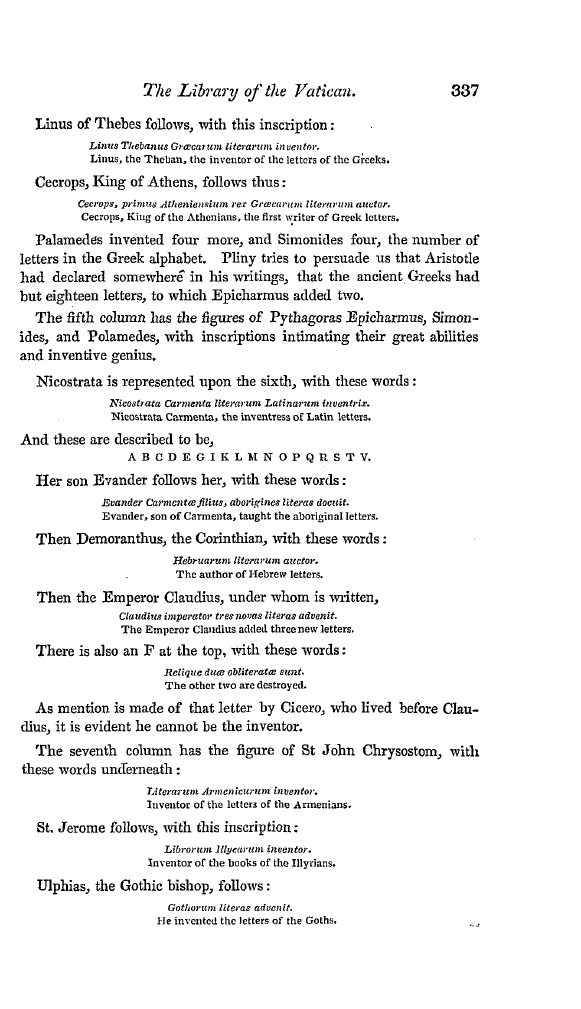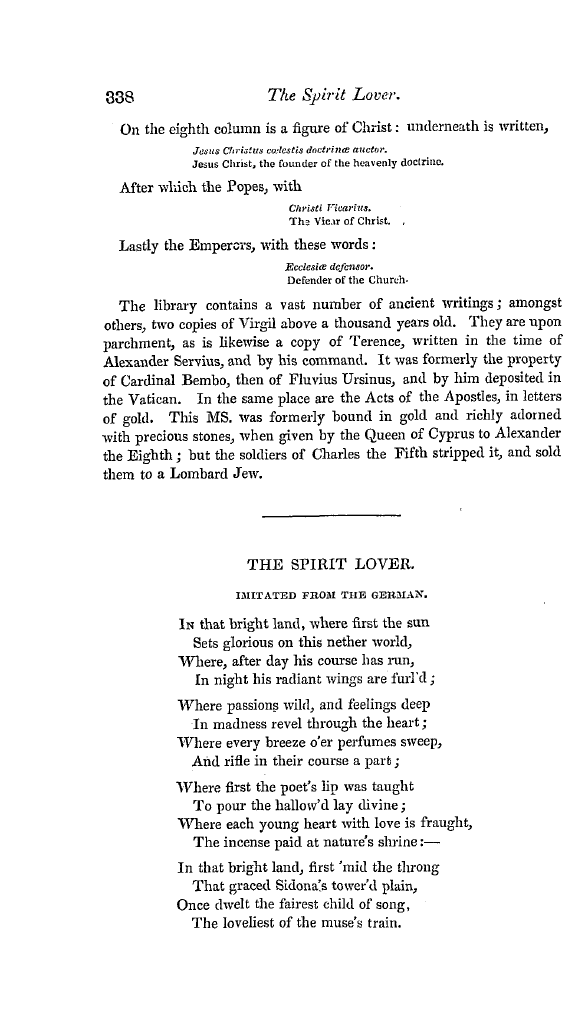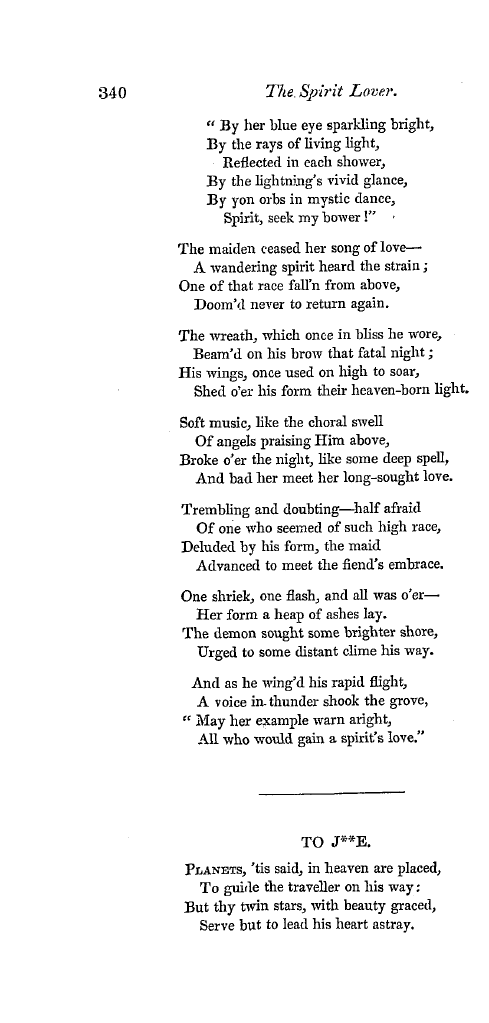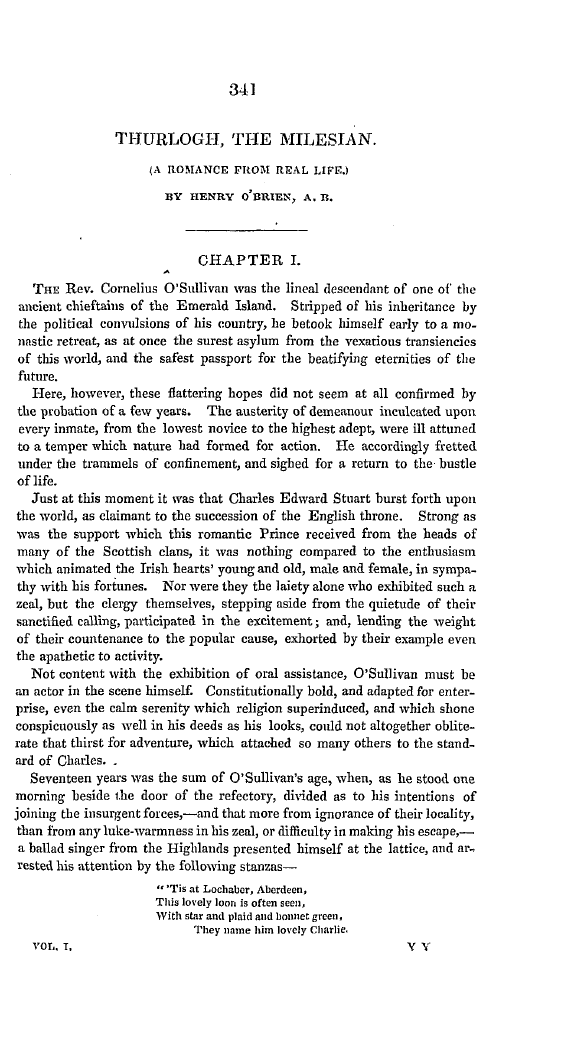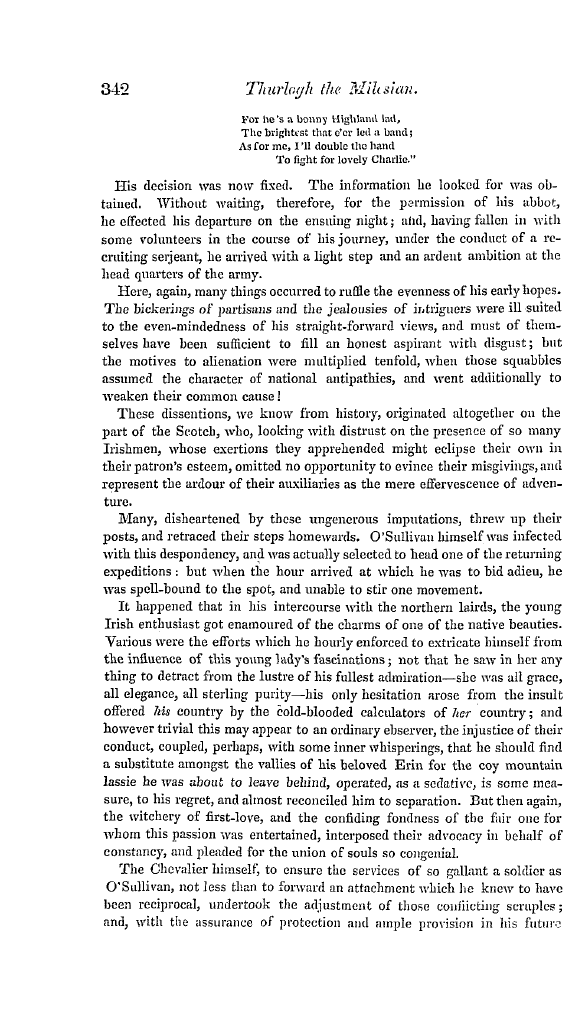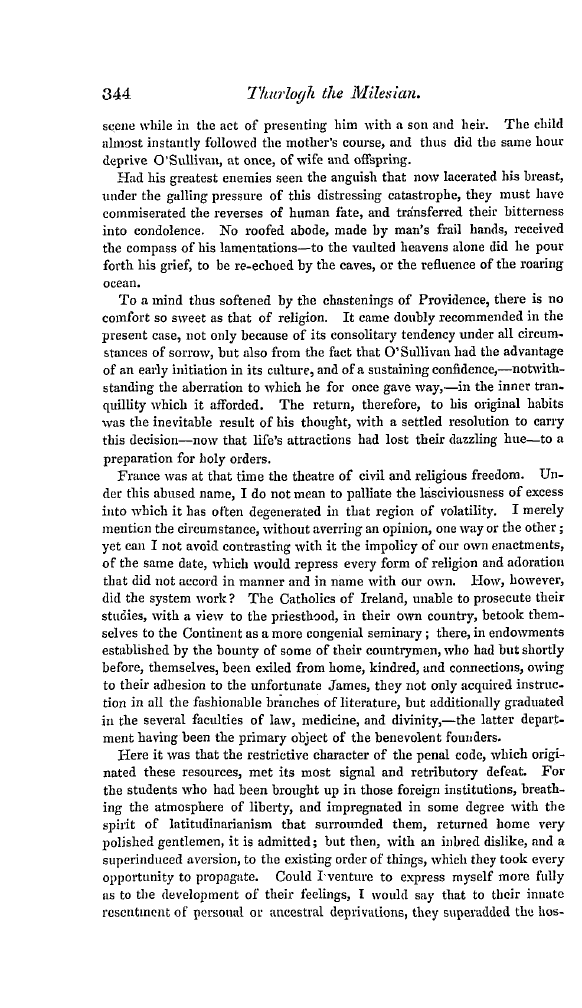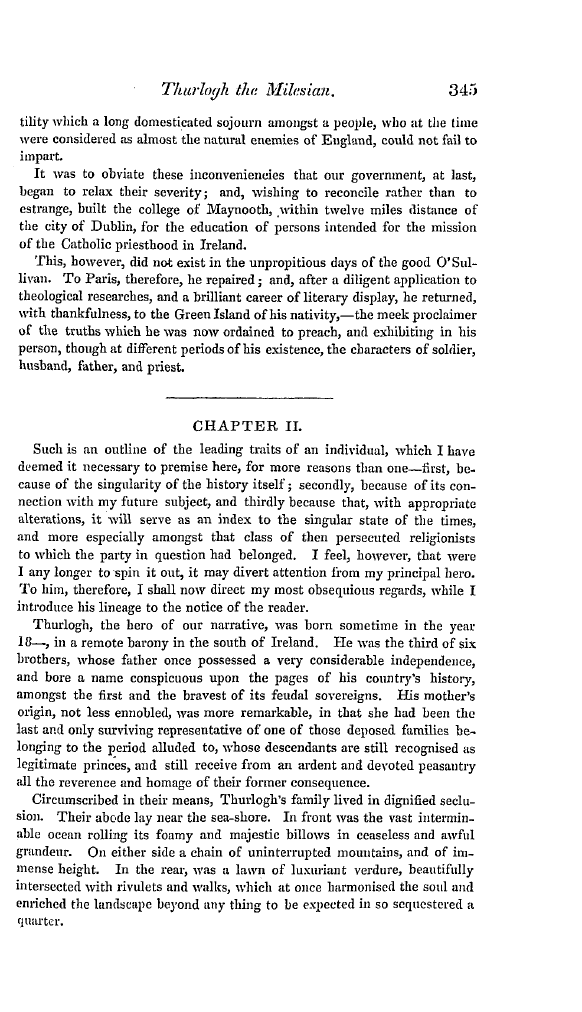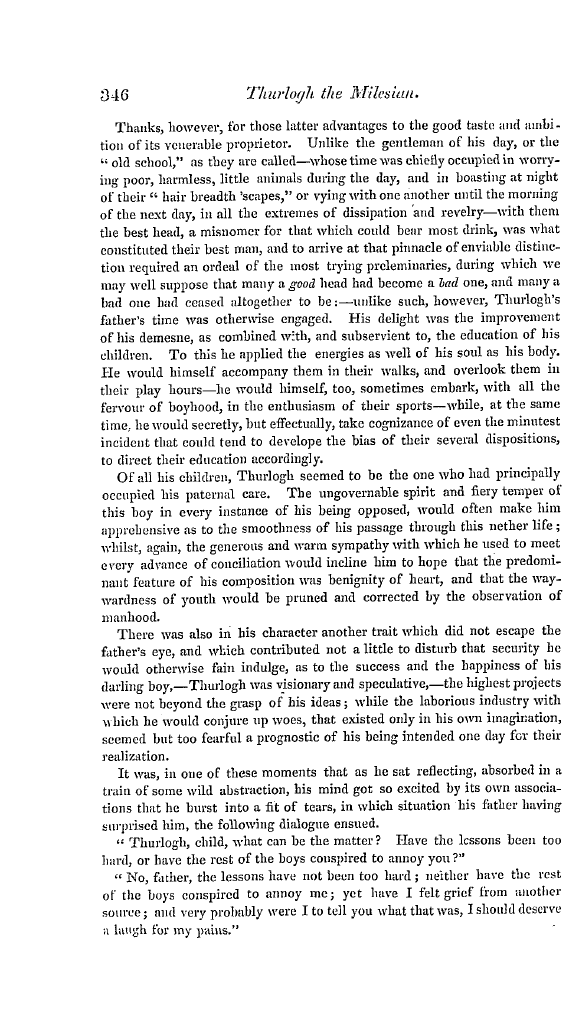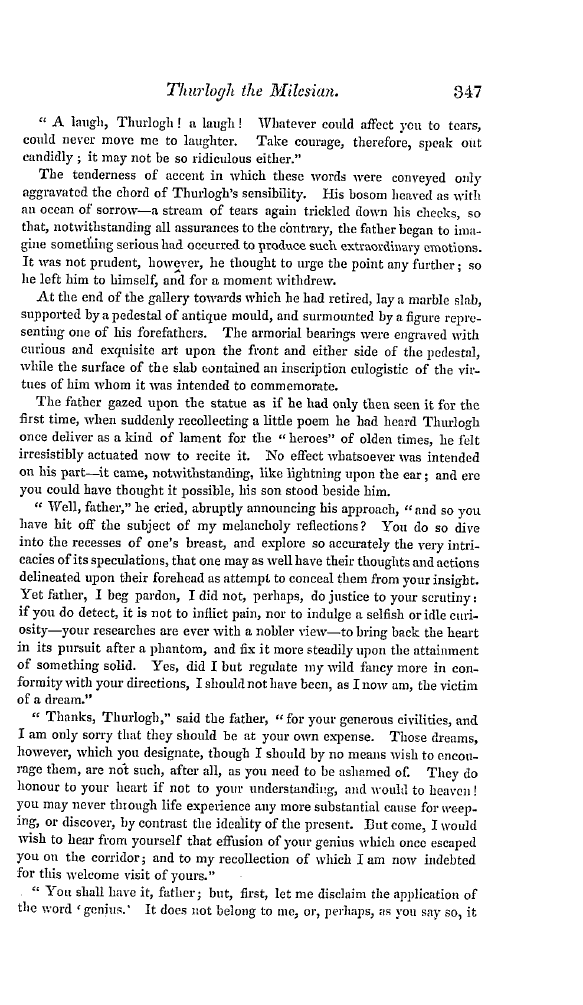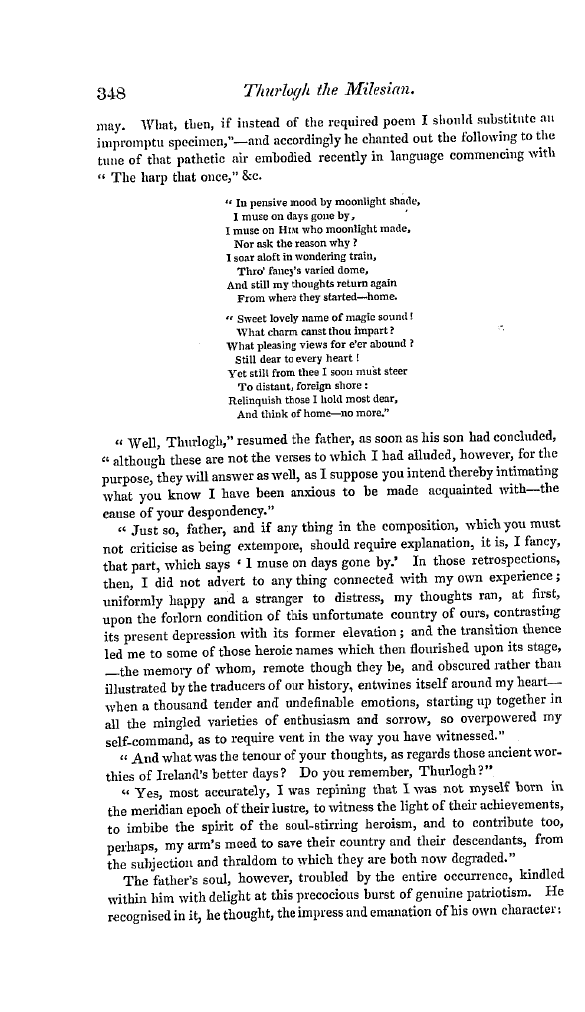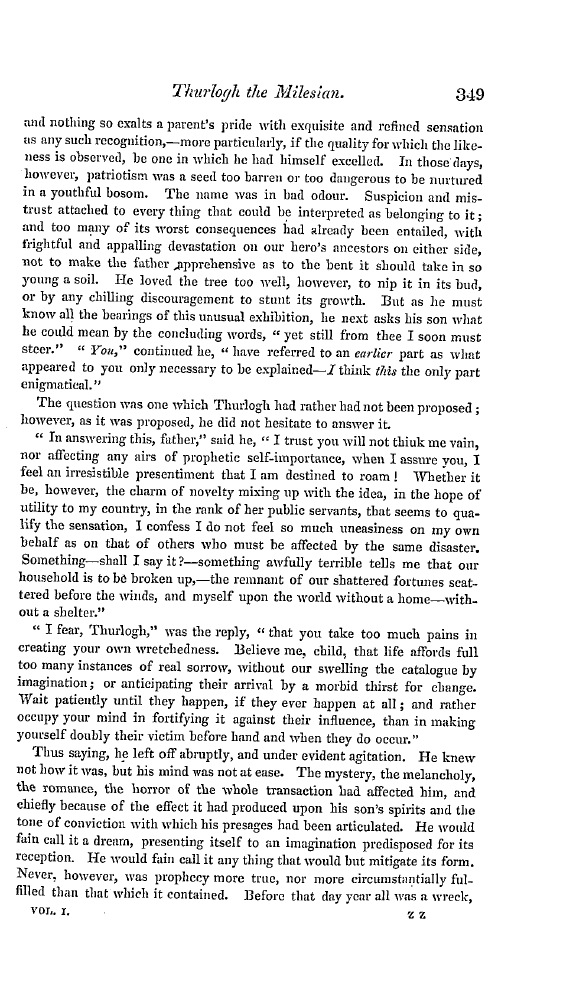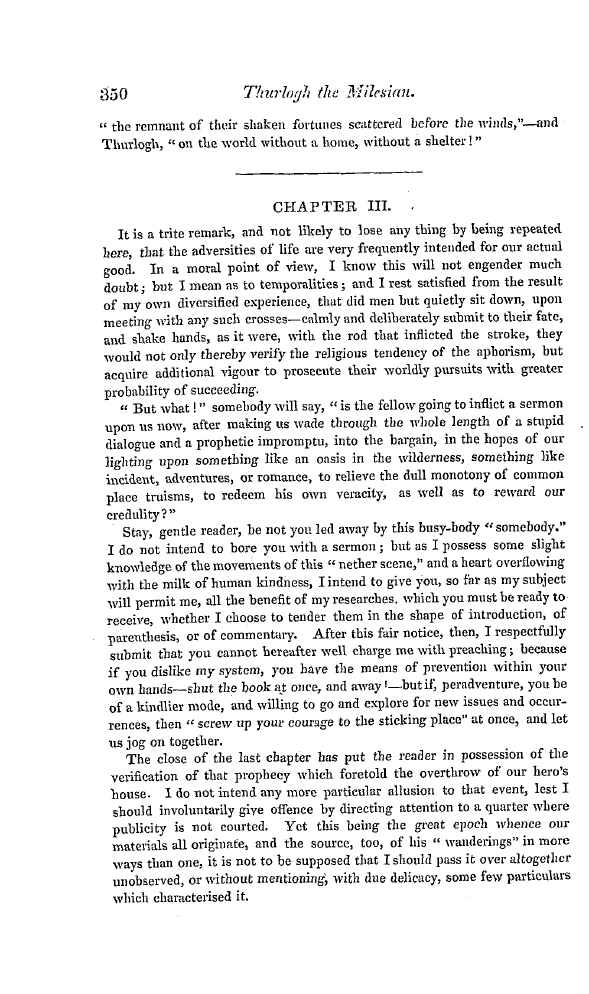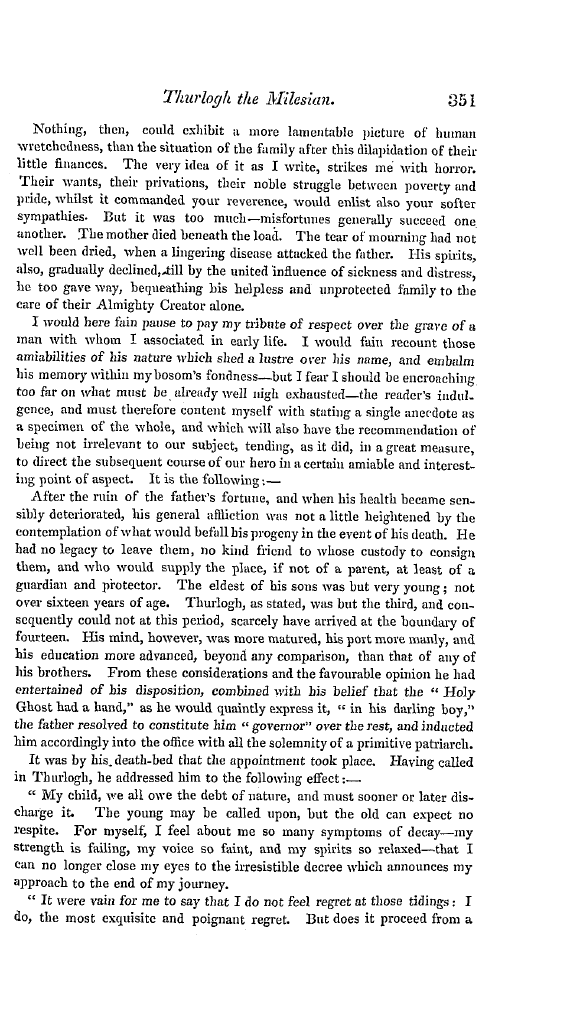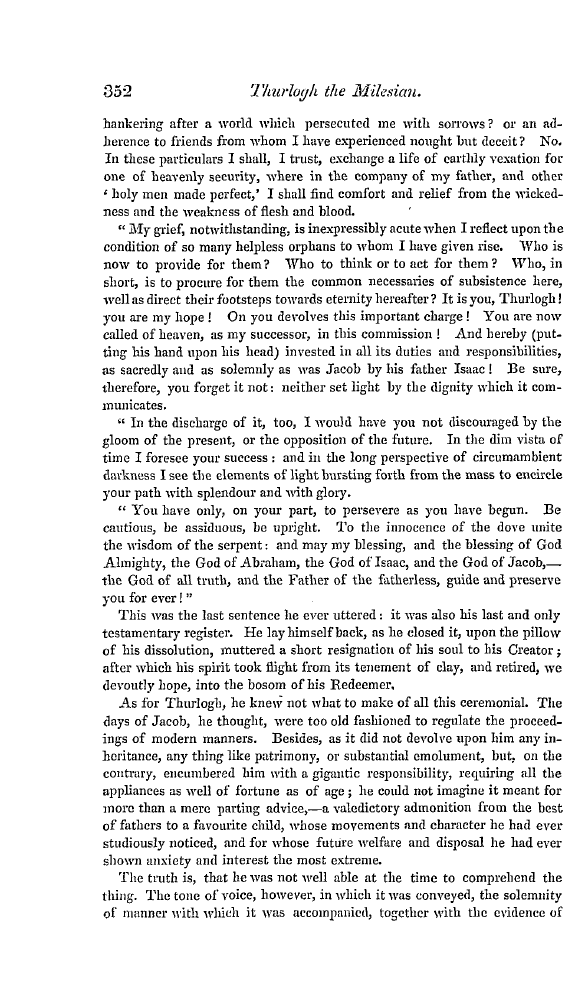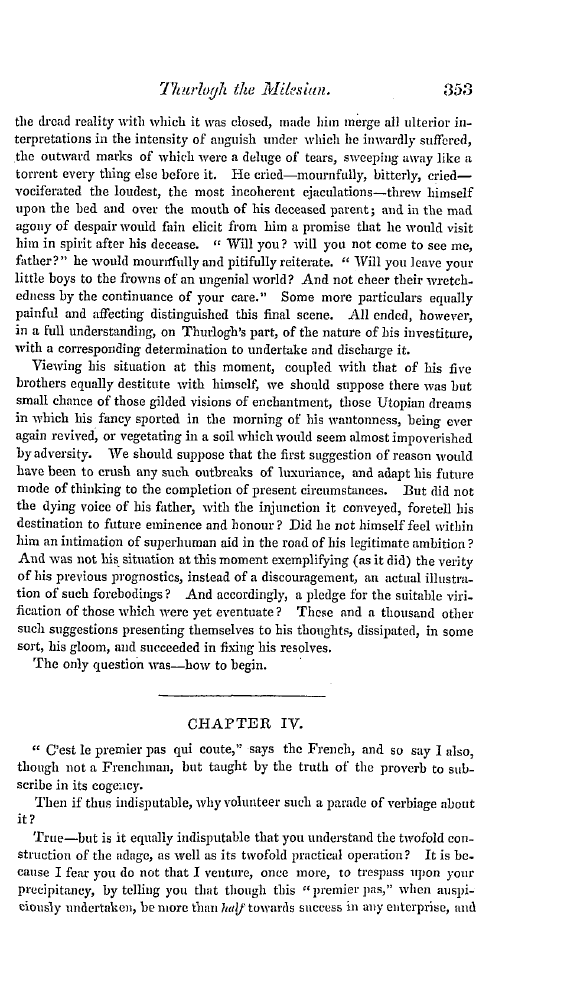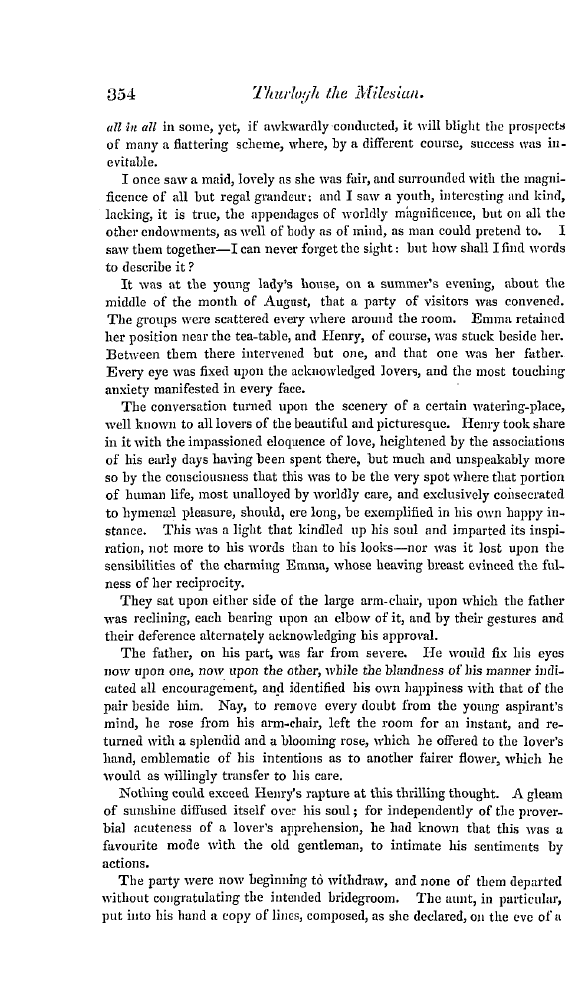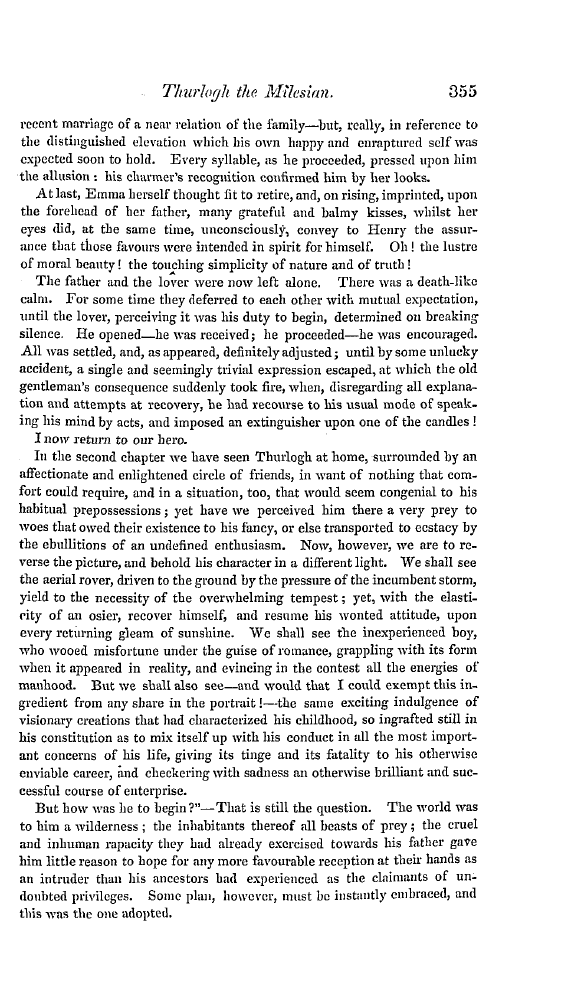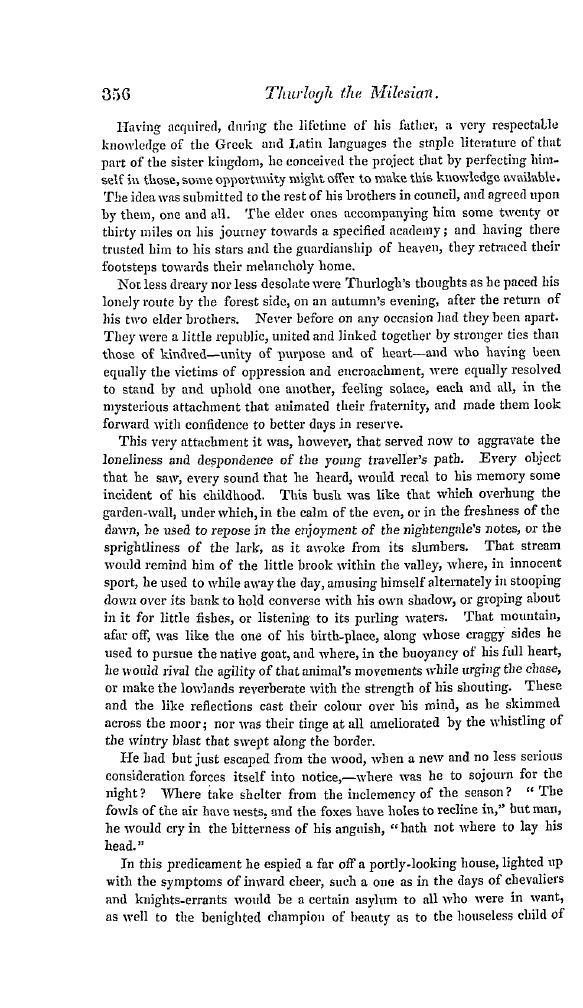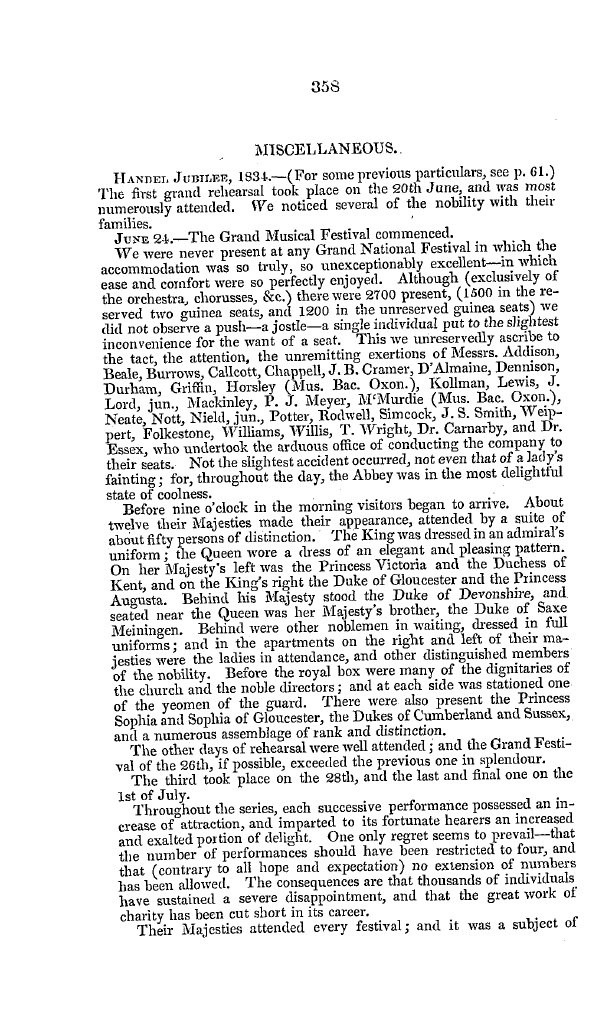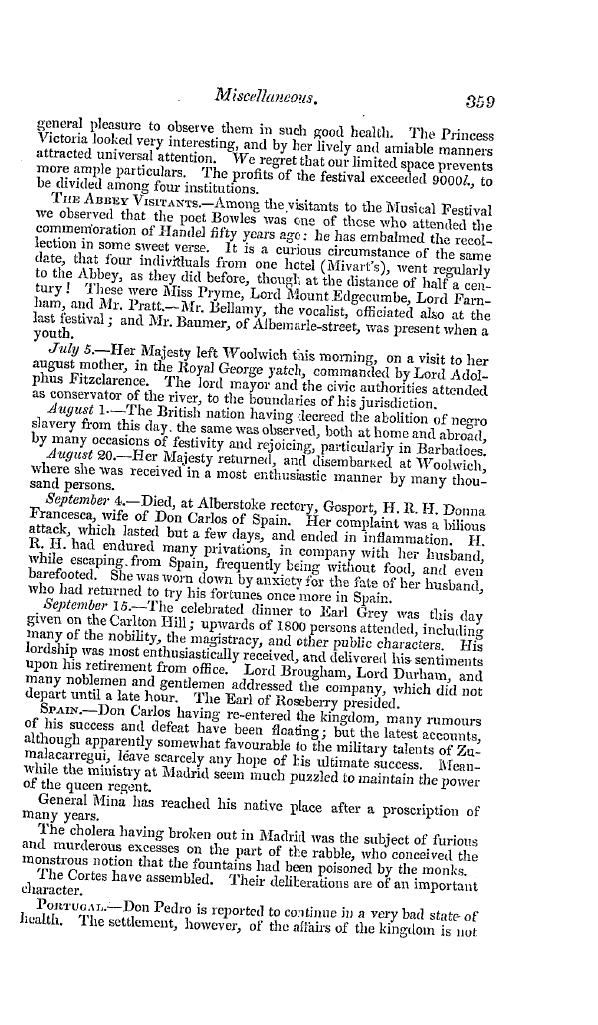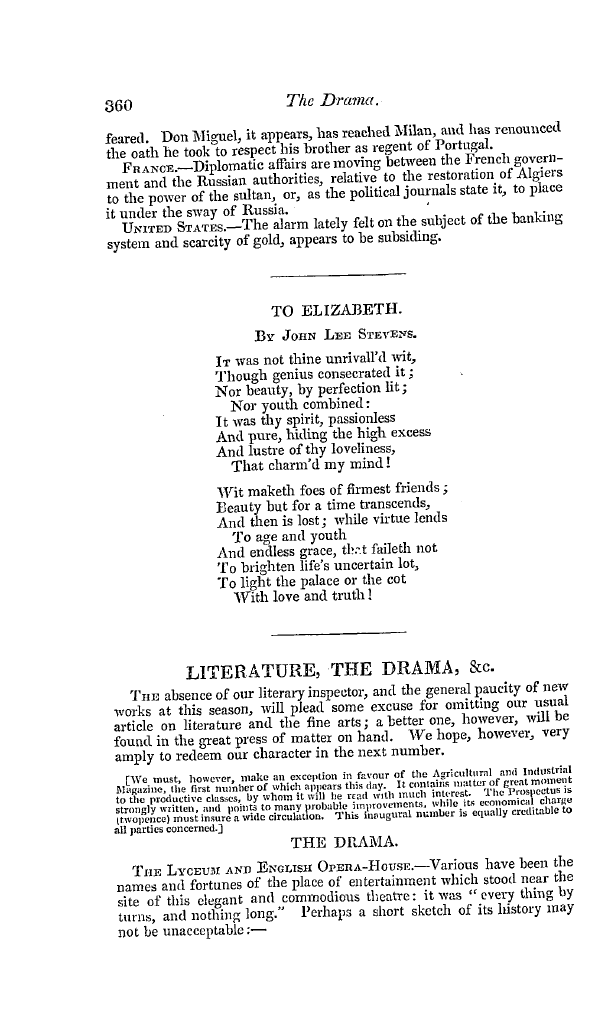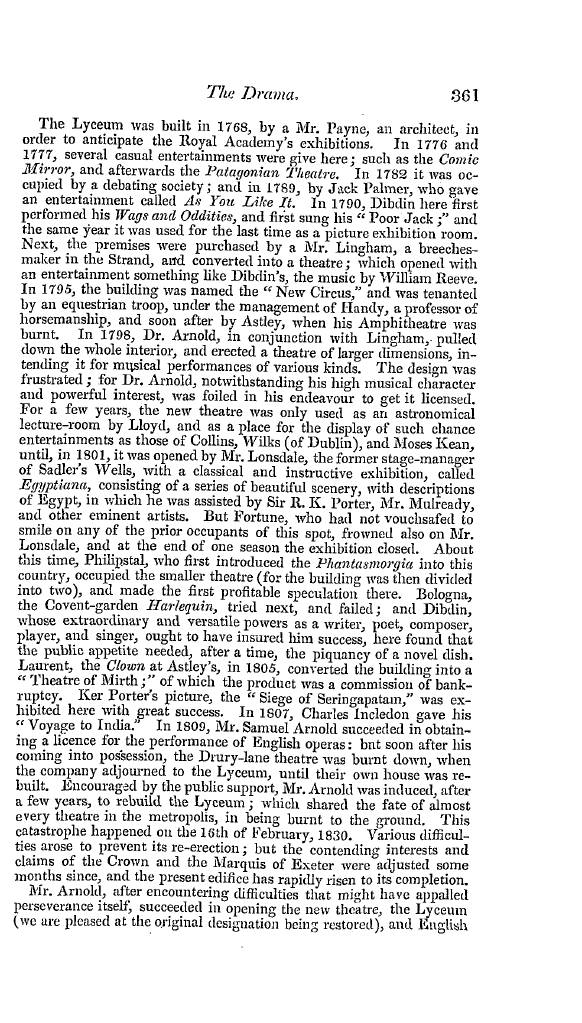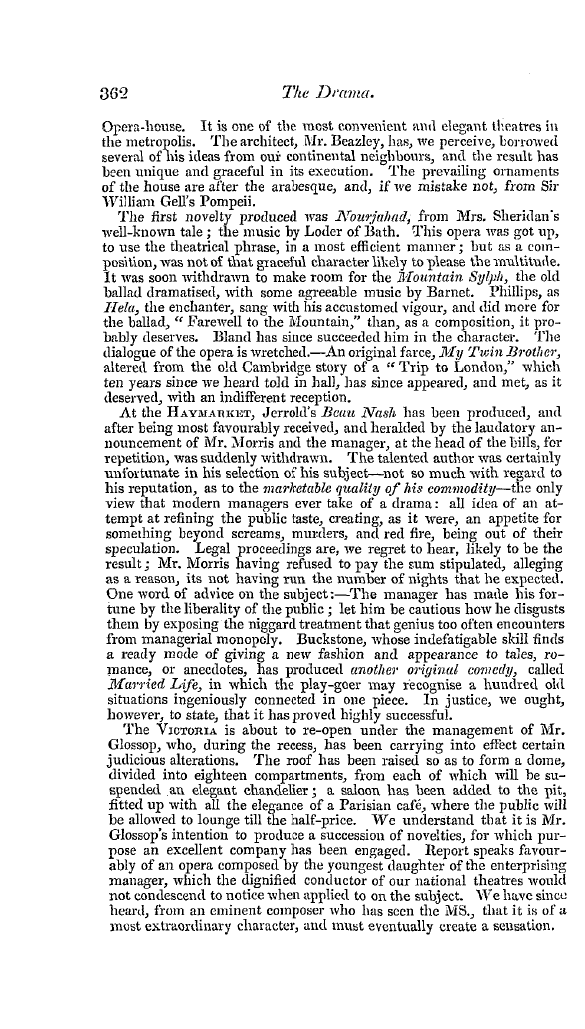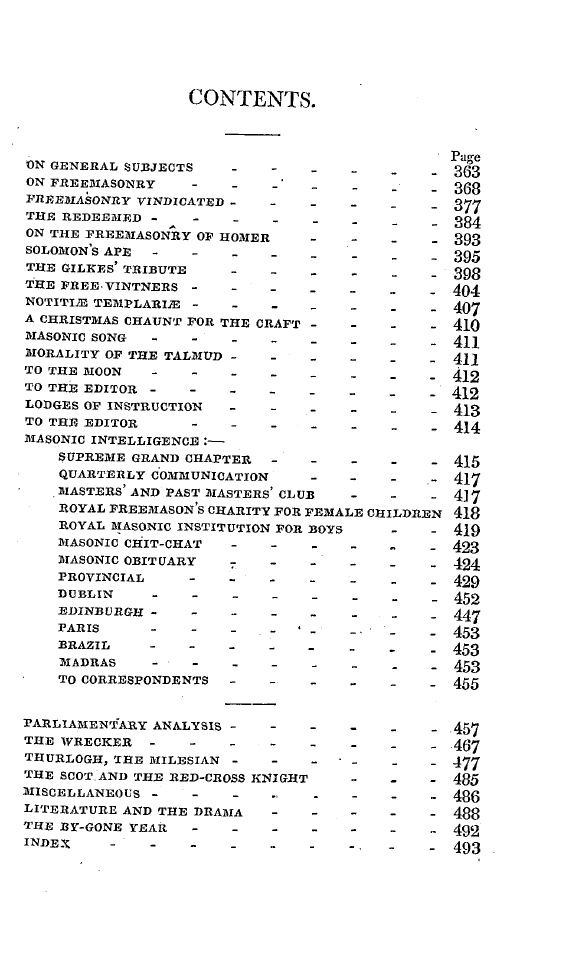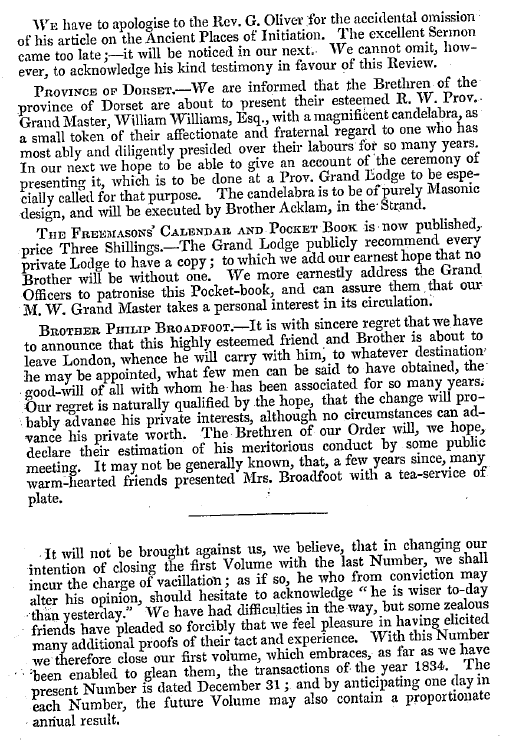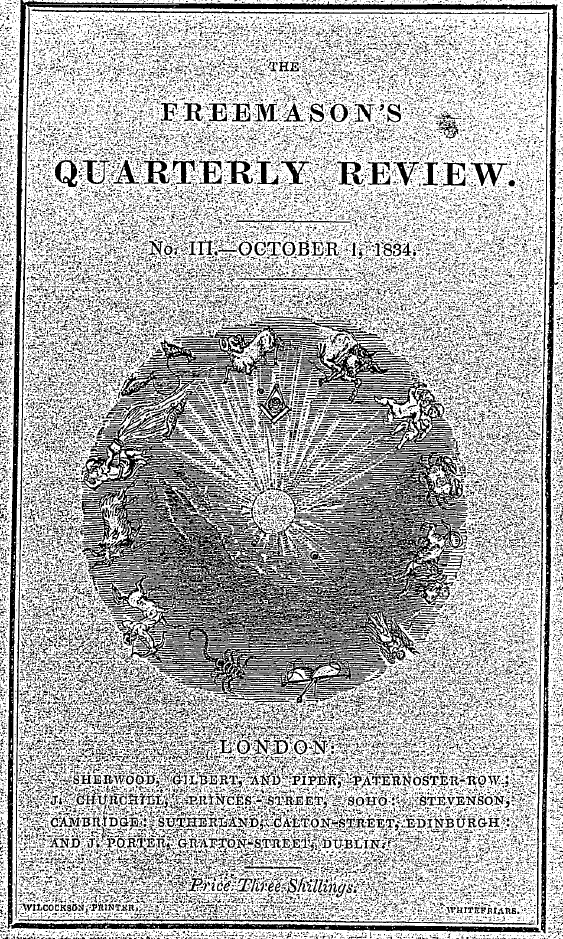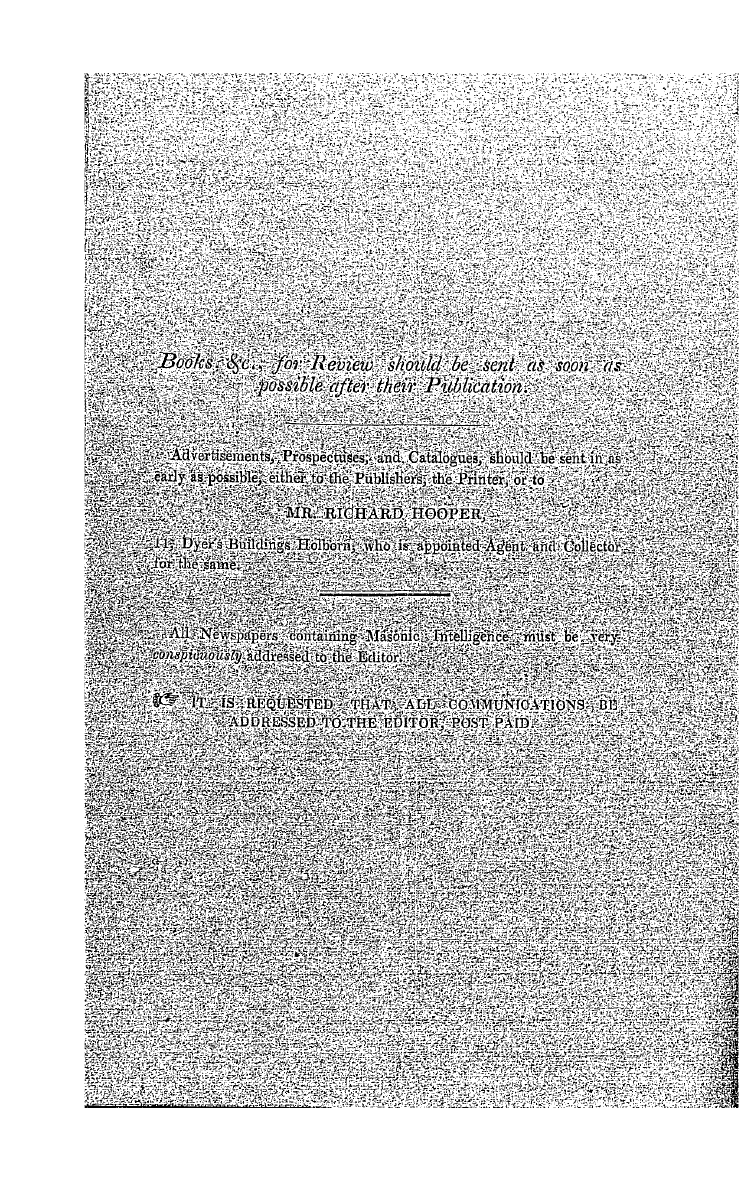-
Articles/Ads
Article TO THE EDITOR OF THE FREEMASONS' REVIEW. ← Page 2 of 8 →
Note: This text has been automatically extracted via Optical Character Recognition (OCR) software.
To The Editor Of The Freemasons' Review.
stones , strongly cemented together by mortar , and is surmounted with a cone of masonry , resembling the Architecture of the contiguous Church and large Tower . This portion of the fabric is , therefore , adventitious to the Tower or shaft of " the Little Steeple , " and has been constructed at a period posterior to the
erection of the cylinder , having been added to the summit of the Building probabl y at the period of the erection of the Cathedral and larger Steeple . This more modern cone , or crown , is about twenty-three feet high , —and thus the whole Tower , complete with the Pyramid , exhibits a handsome fabric about one hundred and three feet in hei ght , ancl is perhaps the most perfect remain of
Antiquity in the universe . I make this assertion because I have had an opportunity of seeing many of the most ancient monuments which exist in Hindoostan ;—I have examined drawings , inspected various representations , and perused descriptions of tbe Antiquities of Asia , Europe , and Africa ; yet can we find neither a picture , nor an account of any monument , which we may
conceive of equal antiquity , that remains in the perfect condition in wliich "the Little Steeple" of Brechin at present exists . During the course of my residence in India , from the year 1808 to 1833 , I possessed favourable opportunities of examining the antiquities which abound on Continental India , and those that are found within the Island of Java . The facts ascertained by me ,
from an examination of ancient Oriental monuments , led me to inspect , on the occasion of my recent visit to my native City , in December , 1833 , with minuteness the Tower , in consequence of whose presence , Brechin has become celebrated in the writings of our Antiquarians;—ancl to my surprise discovered , on the western front of that Tower , two undoubted sculptures connected with
the ancient mythology of Hindoostan . —The figures in question consist of an Elephant , having the feet of a Lion , and a Horse * . Each of those figures is eleven inches in length , and about ei ght in breadth . —They are carved in relief , and placed at the entrance of an ancient gateway , that has been from time immemorial blocked up with Urge stones , leaving , however , a small opening a little above , and between the figures , which is sufficient to mark the
Note: This text has been automatically extracted via Optical Character Recognition (OCR) software.
To The Editor Of The Freemasons' Review.
stones , strongly cemented together by mortar , and is surmounted with a cone of masonry , resembling the Architecture of the contiguous Church and large Tower . This portion of the fabric is , therefore , adventitious to the Tower or shaft of " the Little Steeple , " and has been constructed at a period posterior to the
erection of the cylinder , having been added to the summit of the Building probabl y at the period of the erection of the Cathedral and larger Steeple . This more modern cone , or crown , is about twenty-three feet high , —and thus the whole Tower , complete with the Pyramid , exhibits a handsome fabric about one hundred and three feet in hei ght , ancl is perhaps the most perfect remain of
Antiquity in the universe . I make this assertion because I have had an opportunity of seeing many of the most ancient monuments which exist in Hindoostan ;—I have examined drawings , inspected various representations , and perused descriptions of tbe Antiquities of Asia , Europe , and Africa ; yet can we find neither a picture , nor an account of any monument , which we may
conceive of equal antiquity , that remains in the perfect condition in wliich "the Little Steeple" of Brechin at present exists . During the course of my residence in India , from the year 1808 to 1833 , I possessed favourable opportunities of examining the antiquities which abound on Continental India , and those that are found within the Island of Java . The facts ascertained by me ,
from an examination of ancient Oriental monuments , led me to inspect , on the occasion of my recent visit to my native City , in December , 1833 , with minuteness the Tower , in consequence of whose presence , Brechin has become celebrated in the writings of our Antiquarians;—ancl to my surprise discovered , on the western front of that Tower , two undoubted sculptures connected with
the ancient mythology of Hindoostan . —The figures in question consist of an Elephant , having the feet of a Lion , and a Horse * . Each of those figures is eleven inches in length , and about ei ght in breadth . —They are carved in relief , and placed at the entrance of an ancient gateway , that has been from time immemorial blocked up with Urge stones , leaving , however , a small opening a little above , and between the figures , which is sufficient to mark the


























































